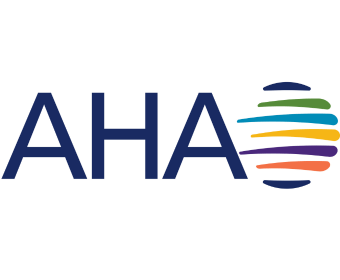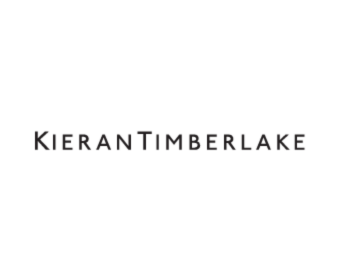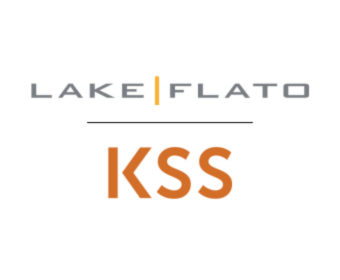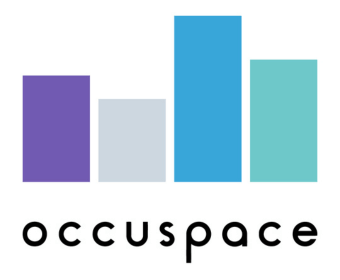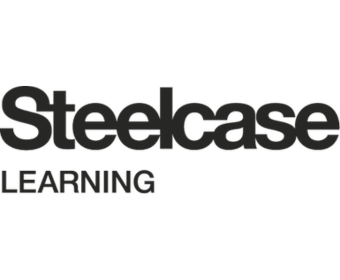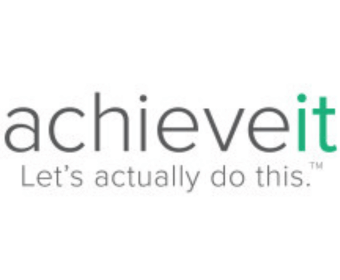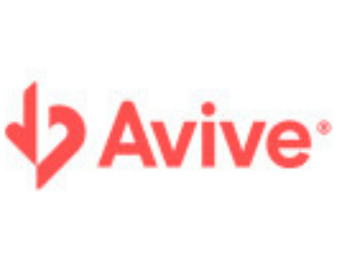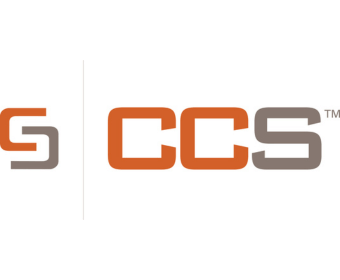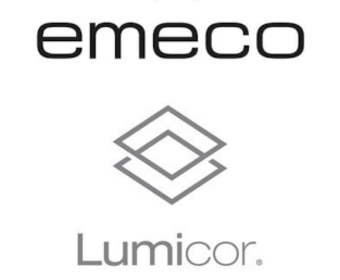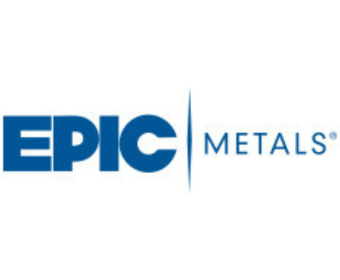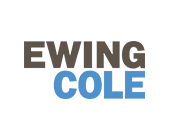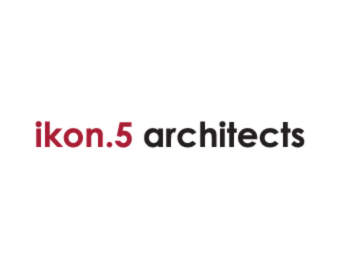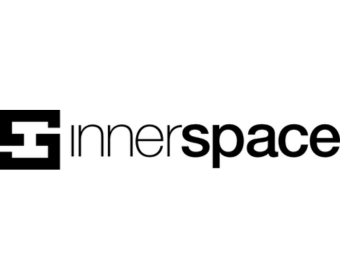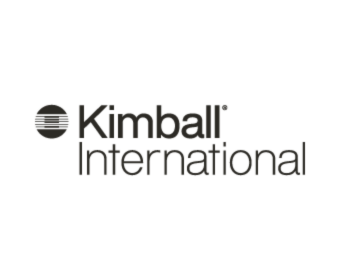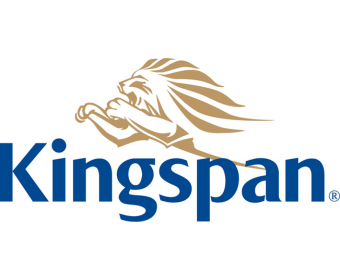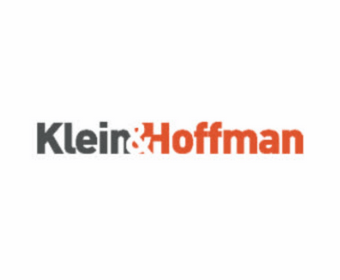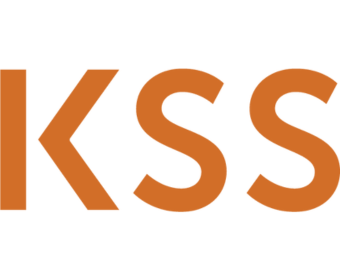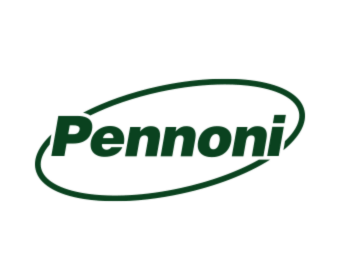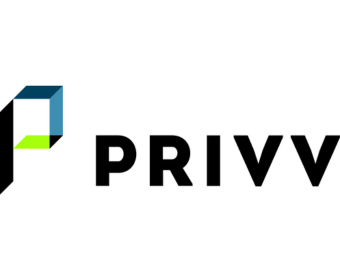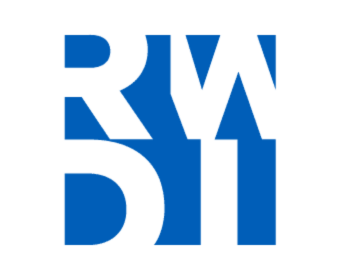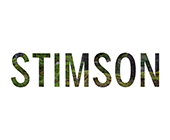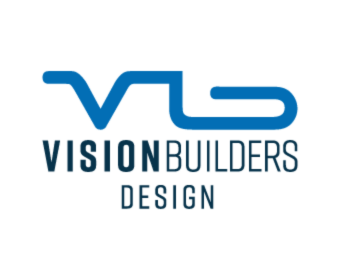- Integrated Planning
Integrated Planning
Integrated planning is a sustainable approach to planning that builds relationships, aligns the organization, and emphasizes preparedness for change.
- Topics
Topics
- Resources
Resources
Featured Formats
Popular Topics
- Events & Programs
Events & Programs
Upcoming Events
- Building Buy-in for Planning: Dealing With Resistance and Gaining Support
Online | March 11 – April 8 - Budgeting for Impact: A Working Group on Resource Planning in Higher Education
Online | Feb 5, Feb 19, March 5 - Cross-Functional Collaboration: Tools and Skills for Working Across Silos
Online | February 10, 17, 24
- Building Buy-in for Planning: Dealing With Resistance and Gaining Support
- Community
Community
The SCUP community opens a whole world of integrated planning resources, connections, and expertise.
- Integrated Planning
Integrated Planning
Integrated planning is a sustainable approach to planning that builds relationships, aligns the organization, and emphasizes preparedness for change.
- Topics
Topics
- Resources
Resources
Featured Formats
Popular Topics
- Events & Programs
Events & Programs
Upcoming Events
- Building Buy-in for Planning: Dealing With Resistance and Gaining Support
Online | March 11 – April 8 - Budgeting for Impact: A Working Group on Resource Planning in Higher Education
Online | Feb 5, Feb 19, March 5 - Cross-Functional Collaboration: Tools and Skills for Working Across Silos
Online | February 10, 17, 24
- Building Buy-in for Planning: Dealing With Resistance and Gaining Support
- Community
Community
The SCUP community opens a whole world of integrated planning resources, connections, and expertise.

- Event Home
- Program
- Registration
- Scholarship
- Hotel & Travel
- Call For Proposals
- Corporate Visibility
- List of Registrants (Login Required)
Program Updates:
- Session slides are now available to attendees in the conference app and on our Learning Resources page under Conference Presentations.

Future Dates:
SCUP 2025 | July 13–15 | Honolulu, HI
SCUP 2026 | July | Minneapolis, MN
SCUP 2027 | July | Raleigh, NCSCUP’s annual conference connects higher education professionals from all across campus and the community to share integrated planning strategies that are breaking down silos and creating sustainable solutions.
Whether you’re new to planning or a seasoned professional, you won’t want to miss the largest event of the year! You’ll walk away feeling empowered to lead your team, unit, department, or entire institution toward a culture of integrated planning.
SCUP 2024 Annual Conference
We’re excited to invite you to join us in Philadelphia where you’ll meet and learn from professionals just like yourself who are trying to navigate the challenges of today and traditions from years past using integrated planning practices—boundary spanning, cross-functional teams, and resource alignment. These stories will motivate, connect, and ignite new ideas to help you prepare for whatever is next. Together we are spreading the reach and energy that integrated planning practices can do for campus leaders and student success!
Be part of the experience that is changing the way campuses are planning for the future!
Conference Highlights
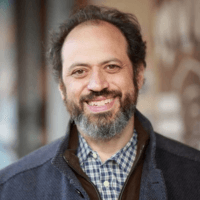
OPENING KEYNOTE
From Disruption to Opportunity: Embracing the AI Revolution
Ethan Mollick
Innovation Expert & Artificial Intelligence Thought Leader; Professor of Entrepreneurship; The Wharton School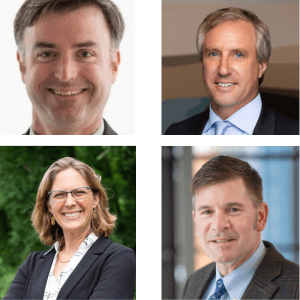
CLOSING KEYNOTE
Transforming Energy Systems on Campus: A Vision for a Clean All-electric Future
Matthew St. Clair, University of California Office of the President | David Hochschild, California Energy Commission | Martha Larson, RMF Engineering, Inc. | Andrew Feick, Swarthmore College
Empower your campus to lead the charge against climate change through decarbonization, guided by expert insights from this transformative keynote panel.
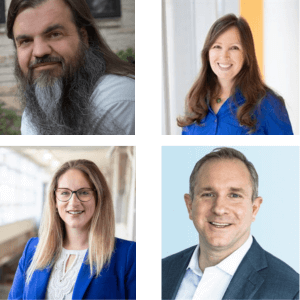
INVITED SESSION
Climate Change, Demographic Shifts, and Polarization, Oh My!
Bryan Alexander, Bryan Alexander Consulting, LLC | Shannon Dowling, Ayers Saint Gross | Edward Venit, EAB | Allison Wilson, Ayers Saint Gross
2-Hour Workshop: Engage in dynamic brainstorming and discover how you can advocate for impactful responses to current trends, ensuring that your campus is prepared for tomorrow.
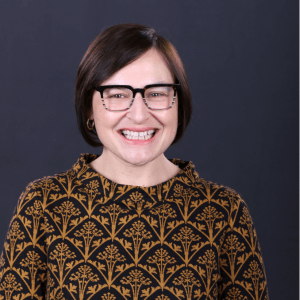
SCUP FELLOWS SESSION
Planning in 2040: Using Foresight Analysis to Look Ahead, Adapt, and Innovate
Dr. Lisa Jasinski
Associated Colleges of the MidwestUnraveling the complexities of tomorrow, this session leverages strategic foresight to uncover research-backed trends, enabling higher education planners to navigate plausible future scenarios and fortify resilience through real-time engagement and actionable insights.

INVITED SESSION
Leadership Lessons Learned: Assessing Strengths, Skills, and Knowledge
Barbara Gellman-Danley
Higher Learning CommissionA higher education leader’s decades of experience are leveraged to offer strategies for becoming a strong administrator at any level, guiding you to assess your skills, position yourself for current and future roles, and embody true leadership that transcends titles.
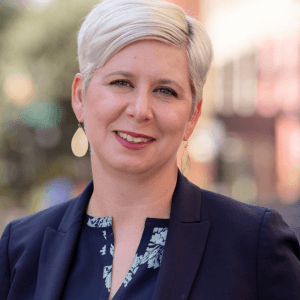
INVITED SESSION
Higher Education, Congress, and the Administration in 2024
Sarah Spreitzer
American Council on Education (ACE)Get an overview of what has been happening in Congress, with the U.S. Department of Education and other federal agencies, and what the 2024 elections might mean for higher education.

2 INVITED SESSIONS
AI’s Biggest Questions, Myths, and Mysteries
Powered Productivity: Super Tech Tools to Get Stuff Done
Beth Ziesenis
Author. Speaker. Nerd.She’s back! You won’t want to miss her energy, humor, and practical tips! She’ll explore some of AI’s biggest question, myths, and mysteries.
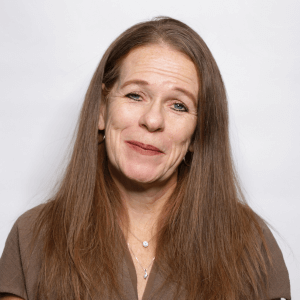
SCUP FELLOWS SESSION
Considering the Invisible Disabilities
Kathleen Kelly, 2023-2024 SCUP Fellow
WellogyLearn how the intersection of the built environment, neurodiverse users, neuroarchitecture, and neuroscience creates spaces that enhance the neurodivergent experience and foster inclusivity on modern academic campuses.

CLOSING RECEPTION
Reading Terminal Market! Philly’s most electrifying dining experience.
Don’t miss a delicious closing reception at the iconic Reading Terminal Market, where you’ll get to sample tasty treats from over 20 amazing food vendors as you take in the sights and sounds of this historic Philly landmark. This mouthwatering foodie event promises a thrilling culinary adventure you won’t want to miss!

CAMPUS TOURS
Experience the History and Excitement of Local Iconic College Campuses!
Select from 11 fascinating campus tours! Marvel at stunning architecture like the Mint at CCP and UPenn’s original College Hall. Witness the ambitious expansion of these hallowed grounds of education. Immerse yourself in the rich history and exciting future of the local campuses. Feel the energy of today’s students. Get an insider’s look at these living monuments to education and the planning behind it. Register today and explore with your SCUP community!
SCUP 2024 Annual Conference Sponsors and Exhibitors
Program
Session slides are now available to attendees in the conference app and on our Learning Resources page under Conference Presentations.
Need help submitting your CEUs?
Here are some instructions to walk you through the process.
SHOW: All Sessions Workshops Tours Planning Institute WorkshopsFriday, July 19, 20248:00 am - 5:00 pmOptional Workshop | SCUP Planning Institute: FoundationsLaying the Groundwork for Strategic Planning
The Foundations workshop is part of the SCUP Planning Institute Model.
Many strategic planning models don’t work in higher education because they’re not designed for higher education. Strategic planning processes designed for corporations or non-profits don’t account for higher education’s complex environment and the unique challenges it faces.
The SCUP Integrated Planning Model is different. It has been developed exclusively for higher education. Our model will help individuals, teams, and institutions solve their thorniest problems. When you use the SCUP Integrated Planning model, you will get an accurate picture of your external environment, ask hard but necessary questions, and build actionable plans. The result? You’ll do more than implement a strategic plan. You’ll foster a campus-wide culture of institutional planning that is future-proof and sustainable.
This workshop guides you through the foundations of the SCUP Integrated Planning Model. After each workshop, you will go back to your campus with tangible takeaways and tools that you can use to grapple with practical problems.
Learning Outcomes
- Assess your institution’s readiness for change so you can remove change inhibitors and pave a pathway to success.
- Identify and analyze stakeholders for your institution’s planning efforts, convince necessary stakeholders to adopt integrated planning practices at your institution, and create a communication plan that ensures a transparent and inclusive planning process.
- Analyze your institution’s internal and external environment, including global forces and trends, internal mandates, and competitors.
- Adapt integrated planning to your institution’s unique situation.
No AIA or AICP credit is offered for the workshop.
Note: Workshop only registration is available.
Member Cost: $450
Nonmember Cost: $650Saturday, July 20, 20248:00 am - 5:00 pmOptional Workshop | SCUP Planning Institute: Design (Day 1 of 2)Developing and Implementing a Strategic Plan
The Design workshop is part of the SCUP Planning Institute Model.
Once you’ve determined your institution’s direction, it’s time to get specific (develop and implement a strategic plan).
Based on best practices, the Planning Institute Workshop will give you the tools to help you build a strategic plan, create alignment and action plans, and prepare to implement and evaluate your plan.
The Planning Institute can help those who:
- Have a planning framework established
- Have written the plan but don’t know how to diffuse it into the rest of the institution
- Might struggle with implementation
Planning Institute Workshop Details
There is a stereotype about strategic planning—it only creates plans that sit on the shelf, collecting dust. But plans that are created without building bridges across boundaries are doomed to fail.
The SCUP Integrated Planning Model will help you develop the skills to lead your institution in an integrated strategic plan process that leads to putting that plan into action.
How? By using a process that is participatory, robust, and sustainable. You will identify who you need to succeed and work with them. You will articulate goals that are relevant, translate those goals into assigned actions, and be ready to adjust those goals when inevitable changes happen.
This workshop gives you the framework to develop, implement, and sustain your integrated plan. You will return to your institution with tools, techniques, and skills you can use to leverage your institution’s complex operating environment for change.
Learning Outcomes
- Assess your institution’s resources and culture so you create a strategic plan that can be implemented.
- Identify strategic issues that must be addressed and map strategies and tactics to address those issues.
- Align plans both vertically with the overall strategic plan and horizontally with other unit plans so the entire institution works together towards goals.
- Implement your plan and prepare for common implementation challenges.
No AIA or AICP credit is offered for the workshop.
Member Cost: $1425
Nonmember Cost: $1975Sunday, July 21, 20249:00 am - 5:00 pmConference RegistrationRegistration is located in the Pennsylvania Convention Center, on the 2nd level bridge behind Grand Hall. When entering the convention center from the Marriott (3rd floor access), registration will be straight ahead through the Grand Hall. Street entry is the corner of Arch and 12th.
9:00 am - 4:00 pmExhibitor Setup8:00 am - 5:00 pmOptional Workshop | SCUP Planning Institute: Design (Day 2 of 2)Developing and Implementing a Strategic Plan
The Design workshop is part of the SCUP Planning Institute Model.
Once you’ve determined your institution’s direction, it’s time to get specific (develop and implement a strategic plan).
Based on best practices, the Planning Institute Workshop will give you the tools to help you build a strategic plan, create alignment and action plans, and prepare to implement and evaluate your plan.
The Planning Institute can help those who:
- Have a planning framework established
- Have written the plan but don’t know how to diffuse it into the rest of the institution
- Might struggle with implementation
Planning Institute Workshop Details
There is a stereotype about strategic planning—it only creates plans that sit on the shelf, collecting dust. But plans that are created without building bridges across boundaries are doomed to fail.
The SCUP Integrated Planning Model will help you develop the skills to lead your institution in an integrated strategic plan process that leads to putting that plan into action.
How? By using a process that is participatory, robust, and sustainable. You will identify who you need to succeed and work with them. You will articulate goals that are relevant, translate those goals into assigned actions, and be ready to adjust those goals when inevitable changes happen.
This workshop gives you the framework to develop, implement, and sustain your integrated plan. You will return to your institution with tools, techniques, and skills you can use to leverage your institution’s complex operating environment for change.
Learning Outcomes
- Assess your institution’s resources and culture so you create a strategic plan that can be implemented.
- Identify strategic issues that must be addressed and map strategies and tactics to address those issues.
- Align plans both vertically with the overall strategic plan and horizontally with other unit plans so the entire institution works together towards goals.
- Implement your plan and prepare for common implementation challenges.
No AIA or AICP credit is offered for the workshop.
Member Cost: $1425
Nonmember Cost: $19759:30 am - 11:45 amOptional Tours | Verdant Temple: Campus-wide Walking Tour of Temple UniversityVerdant Temple: Campus-wide Walking Tour of Temple University
Temple University’s main campus has transformed dramatically in recent years, redefining its identity through multiple projects from two facilities master plans and a landscape master plan. This tour will show how Temple has expanded its urban, landlocked campus with “found” outdoor space while preserving its historic architectural core and improving the community experience. Come explore Temple’s largest landscape project at Liacouras Walk South, the newly-renovated Ritter Hall Complex, the recently-completed O’Connor Plaza and Founder’s Garden in the heart of campus, and conclude at Temple’s newest pedestrian gateway.
Learning Outcomes:
- Discuss how Temple redefined its identity from an assemblage of bland modernist-era buildings to a dynamic environment filled with signature contemporary architecture and an active, unifying landscape.
- Evaluate how Temple’s facilities and landscape master plans translated into transformative campus projects.
- Explain how the changes to Temple’s landscape and outdoor spaces has improved the campus experience for students and visitors.
- Identify lessons learned from Temple’s facilities and landscape projects at various stages of completion.
AIA LU 1.5 Unit (SCUP59T001)
AICP CM 1.5 UnitCost: $65
12:30 pm - 3:00 pmOptional Tours | Haverford College Tour: Jaharis Hall and Roberts Music BuildingJaharis Hall and Roberts Music Building, Haverford College
The new Roberts Music Building at Haverford College is located at the end of a sweeping natural landscape that serves as the College’s front lawn. This tour will explore the design influences that inspired the development of this interdisciplinary home for music. Jaharis Hall’s setting inspired the creation of an outward looking building that invites participation in the arts, reflects a liberal arts pedagogy, and puts music instruction in direct connection with this arboretum campus. Join us to discover how this project supports music pedagogy while blending seamlessly into the campus landscape.
Learning Outcomes:
- Discuss how Haverford’s pedagogical intentions influenced facilities design.
- Identify the immersive design qualities of Jaharis Hall and how it weaves into the campus’s historic landscape.
- Describe how the recital hall’s design prioritizes versatility with a focus on acoustical excellence.
- Gain lessons learned from Haverford’s collaborative design process and find opportunities to apply them to your campus projects.
AIA LU 1.5 Unit (SCUP59T002)
AICP CM 1.5 UnitThe Music Building received an Honorable Mention for the SCUP AIA-CAE/SCUP Excellence Award in Architecture in 2022.
Cost: $65
1:00 pm - 3:00 pmOptional Tours | Temple University Tour of Repurposed Former Library (Hard Hat Tour)Temple University Tour of Repurposed Former Library (Hard Hat Tour)
On this tour, you’ll experience how Temple University transformed Paley Hall, formerly an outdated brutalist 1960s library into a modern, light-filled College of Public Health (CPH). Join us to hear how and why Temple was able to realize this metamorphosis, and to see the surgical structural modifications on the site to “bring in the light” and achieve WELL and LEED certifications. We’ll share the construction in progress which will yield a building that celebrates the consolidation of public health at the campus nexus, activating and defining a major campus pedestrian walk and a future central campus quadrangle.
Learning Outcomes:
- Discuss how the building’s renovations reimagine public health education.
- Assess the ways in which the new CPH consolidates and improves upon a college that was decentralized across multiple buildings and two campuses.
- Explore state-of-the-art design of the CPH’s teaching and learning spaces, which aim to ensure that health education is preparing students for the future workplace.
- Discuss the design and programming of the building’s simulation center and teaching kitchen, which will provide education that improves public health and nutrition.
AIA LU/HSW 1.5 Unit (SCUP59T003)
AICP CM 1.5 UnitCost: $65
3:00 pm - 4:30 pmNewcomer SocialJam Out and Mingle!
Enjoy a jam session playing music bingo! It’s a great way to meet new people and maybe even win an exciting prize. We’ll have tasty snacks, beer, and wine to keep the good vibes flowing.
Don’t miss out!
This event is open to new members and first-time attendees.
4:45 pm - 6:00 pmOpening KeynoteOpening Keynote | Ethan Mollick
The recording is no longer available. It was available to registrants only from August 1–September 1, 2024.
Ethan Mollick is an Associate Professor at the Wharton School of the University of Pennsylvania, where he studies and teaches innovation and entrepreneurship, and also examines the effects of artificial intelligence on work and education. He also leads Wharton Interactive, an effort to democratize education using games, simulations, and AI.
His academic papers have been published in top management journals and his research has been covered by CNN, The New York Times, and other leading publications. He has created numerous teaching games on a wide variety of topics.
Prior to his time in academia, Ethan co-founded a startup company, and he currently advises a number of startups and organizations. Mollick received his PhD and MBA from MIT’s Sloan School of Management and his bachelor’s degree from Harvard University.
6:00 pm - 7:30 pmWelcome ReceptionNetwork and socialize with other attendees, and enjoy hors d’oeuvres.
Monday, July 22, 20247:30 am - 4:00 pmConference RegistrationRegistration is located in the Pennsylvania Convention Center, on the 2nd level bridge behind Grand Hall. When entering the convention center from the Marriott (3rd floor access), registration will be straight ahead through the Grand Hall. Street entry is the corner of Arch and 12th.
8:30 am - 10:30 amOptional Tours | University of Pennsylvania Tour: Amy Gutmann Hall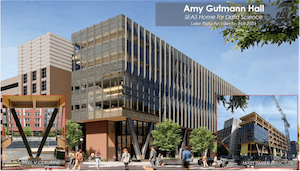
University of Pennsylvania Tour: Amy Gutmann Hall
University of Pennsylvania’s (Penn) Amy Gutmann Hall will serve as a hub for cross-disciplinary collaborations that harness research and data across Penn’s 12 schools and numerous academic centers. Upon its August 2024 completion, Amy Gutmann Hall will centralize resources that will advance the work of scholars across a wide variety of fields while making the tools and concepts of data analysis more accessible to the entire Penn community. Join us for a look at how this mass timber data science hub will provide active learning classrooms, collaborative spaces for student projects, and laboratories for the entire Penn community.
Learning Outcomes:
- Discuss how this new facility’s laboratories and active learning hybrid classrooms will support student education for future work.
- Explain how the building process used advanced computation and data to engineer and prefabricate the mass timber structure.
- Detail how this facility centralizes resources to advance academic work across a variety of disciplines.
- Identify the design elements that aim to connect occupants of a digital world with the natural environment.
AIA LU 1.5 Unit (SCUP59T004)
AICP CM 1.5 UnitCost: $65
8:30 am - 9:30 amConcurrent SessionsAI’s Biggest Questions, Myths, and Mysteries
Presented by: Beth Ziesenis, Owner, Your Nerdy Best Friend
Artificial Intelligence (AI) often feels like a blend of buzzwords and bewilderment. Will robots take our jobs? Does ChatGPT steal our data? Are AI tools big fat liars?
Join Beth Z, Your Nerdy Best Friend, in a lively exploration of AI’s most puzzling questions and common myths. With nerdy humor mixed with practical tips, Beth Z makes the enigmatic world of AI a tad less intimidating and a lot more intriguing.
Learning Outcomes:
- Identify ways to future-proof your job from an AI takeover.
- Explain why AI makes up facts and how to combat misinformation.
- Examine the issue of data privacy.
- Gain insight into AI challenges with plagiarism and copyright infringement.
- Discover the newest AI tools and how to stay on top of new AI technology and opportunities.
HBCUs and the Fourth Wave: Opportunities and Lessons Learned
Presented by: Troy Glover, Senior Educational Planner, DLR Group | Logan Hampton, President, Lane College | Yogesh Saoji, Planning and Urban Design Leader, DLR Group |
In a time of racial segregation and limited opportunity, Historically Black Colleges and Universities (HBCUs) became pillars of the African American community, fostering academic excellence and a sense of cultural identity. HBCU leaders will discuss their institutions’ significant and dynamic journeys over the years, and how they have evolved through different historical contexts and social changes. Join us to hear critical stories of how HBCUs have leveraged physical, academic, financial, and operational strategies to enhance and strengthen their missions, from their early years, through the pandemic, and today.
Learning Outcomes:
- Recognize the significance of HBCUs, the critical role they play in higher education, and their resilience in dealing with opportunities and challenges.
- Recount lessons learned from two HBCUs about how they’ve navigated student enrollment, integrated planning, and operational and financial strategies.
- Apply successful approaches and techniques from HBCU strategic partnerships that maximize their use of real estate opportunities.
- Discuss how to incorporate and align an institution’s academic mission with facility and strategic planning.
AIA LU 1.0 Unit (SCUP59C2970)
AICP CM 1.0 UnitPlanning Types: Campus Planning
Tags: External Collaboration / Partnerships; Historically Black College or University (HBCU); Mission / Vision / Identity; Real EstateHow to Create a Flexible, Holistic Campus Master Plan
Presented by: Catherine Brown, Director of Planning and Projects, Metropolitan Community College Area | Megan Jarosz, Associate Partner, Holland Basham Architects | Aaron Persen, Director of Facilities Planning and Construction, Metropolitan Community College
Developing a flexible master plan is critical for keeping up with the pace of education, increasing enrollment, and improving the surrounding community. This session will share tools for creating a planning framework to facilitate discussion and decision-making in the ever-changing landscape of higher education. A master plan that approaches the campus from a holistic perspective can provide the flexibility to plan and execute projects for years into the future. Come learn how Metropolitan Community College’s (MCC) master plan considers campus goals, space utilization, public and private partnerships, and overall community impact to provide a solid framework for future planning.
Learning Outcomes:
- Examine current space on your campus to assess opportunities for future improvements.
- Evaluate how strategic priorities and goals affect physical space and integrate into other campuswide planning initiatives and goals.
- Increase your institution’s impact by providing the right options for physical and hybrid spaces as well as online support.
- Engage both public and private partnerships to increase community and industry involvement in programs and student outcomes.
AIA LU 1.0 Unit (SCUP59C3251)
AICP CM 1.0 UnitHow to Design Neuro-inclusive Learning Environments
Presented by: Scott Montemerlo, Director of Education, Officeworks Inc. | Allison Page, Campus Planner, Smith College | Michael Tyre, Principal, Amenta Emma Architects
An estimated fifteen-to-twenty percent of the world’s population exhibits some form of neurodivergence. Awareness of the sensory and environmental issues that affect accessibility and wellbeing for neurodivergent students can allow planners to support the unique needs of this learning community. In this session, we’ll discuss how Smith College leveraged SCUP-funded research to make a case for using neuro-inclusive design strategies to create accessible learning environments. Come learn about the prevalence and challenges that neurodiverse learners face, how to identify and mitigate common sensory distractions, and how to engage students and faculty in programming neuro-inclusive academic spaces.
Learning Outcomes:
- Describe what neurodiversity is and how it impacts student success and wellbeing.
- Identify the common sensory distractions that affect accessibility for neurodivergent students in academic learning environments and the strategies you can use to mitigate them.
- Detail an approach to stakeholder engagement for identifying the need for spaces that support success and wellbeing for neurodivergent learners campus.
- Discuss planning strategies for learning environments to promote user choice and neuro-inclusion.
AIA LU/HSW 1.0 Unit (SCUP59C2899)
AICP CM 1.0 UnitPlanning Types: Campus Planning; Diversity, Equity, and Inclusion Planning
Challenges: Engaging Stakeholders
Tags: Accessibility; Diversity Equity and Inclusion (DEI); Engaging Stakeholders; Learning EnvironmentsInstitutional Transformation in Turbulent Times
Presented by: Glynis Fitzgerald, President, Alvernia University | Joseph (Tim) Gilmour, Principal/President Emeritus, Strategic Initiatives, Inc. | Rodney Ridley, Vice President of Research, Economic Development, and Innovation, Alvernia University
Alvernia University can provide inspiration for planners who must undertake the difficult task of transforming their institution in turbulent times. In four years, Alvernia University has raised $25 million in external support, garnered a $400 thousand grant, and raised enrollment by more than six percent. This session will detail Alvernia University’s transformation strategy, which has radically changed how the university educates students and supports regional economic development. The Alvernia approach offers a proven model that institutions can adapt for their own transformation efforts, cutting plan development and implementation time.
Learning Outcomes:
- Present a promising new approach for the transformation of your institution to your colleagues.
- Detail a transformation strategy that fosters regional economic development and provides students with the job skills they need to succeed in the workplace.
- Explain the importance of obtaining public and private grants and other support to advance your institution’s transformation strategy.
- Assist with the application of basic transformation principles to your institution’s efforts to transform.
Planning Types: Strategic Planning
Challenges: Change Management
Tags: Disruptive Change; Economic Development; Student RecruitmentNavigating Academic Success: Dashboards for Data-informed Decision Making
Presented by: Nasrin Fatima, Associate Provost for Assessment and Analytics, SUNY at Binghamton
The role of data-informed decision-making can’t be overstated. By leveraging advanced data visualization techniques, these dynamic dashboards provide real-time insights into key performance indicators, enabling informed and strategic decision making. We’ll embark on a visual journey into the heart of data-informed decision making with a focus on exceptional dashboards, delving into visual analytics to illuminate the transformative impact they have on leadership and student success. Come learn about the transformative impact that Binghamton University’s dashboard creation and visual analytics has on academic leadership, departmental efficiency, student success initiatives, and institutional excellence.
Learning Outcomes:
- Explain how to design and execute a data collection process that aligns with the strategic planning process.
- Discuss a process for aligning intuitional data with school, college, and departmental data with key performance indicators.
- Engage relevant stakeholders to track standard metrics and use customized data output for action plans.
- Identify ways to improve and modify data collection, sharing, and leveraging processes at the departmental, divisional, and institutional levels.
Planning Types: Institutional Effectiveness Planning
Tags: Assessment / Analytics; Dashboards; Data; Institutional Effectiveness; Planning TechnologyPursuing Carbon Neutrality Through Campus Master Planning
Presented by: Meg Campbell, AVP Planning Design and Construction, University of Louisville | Mary Anne Ocampo, Principal | Urban Designer, Sasaki | Tracy Steward, Partner, CMTA Consulting Engineers
Climate commitments and carbon neutrality are becoming top priorities for many campuses. Since building engineering systems account for seventy-to-eighty percent of carbon production, all campus stakeholders are contributors to the future success of emissions goals. Despite established infrastructure, reliance on city utilities, high deferred maintenance, and financial constraints, the University of Louisville (UofL) is pursuing carbon neutrality and is on track to achieve a sixty percent reduction by 2030 and one hundred percent by 2050. This session will share necessary master planning strategies for pursuing carbon neutrality at the campus level, emphasizing the need for rigorous, multi-disciplinary stakeholder engagement.
Learning Outcomes:
- Identify multi-disciplinary campus stakeholders and project team members to engage in the master planning process.
- Identify financial opportunities that support your campus’s carbon footprint reduction.
- Detail best practices for capital planning and deferred maintenance planning in the pursuit of campus carbon neutrality.
- Explain the role of utility rate structures to influence decision making for financing carbon footprint reduction strategies.
AIA LU 1.0 Unit (SCUP59C3107)
AICP CM 1.0 UnitPlanning Types: Campus Planning; Sustainability Planning
Challenges: Dealing with Climate Change; Engaging Stakeholders
Tags: Campus Master Planning; Carbon Neutral; Deferred Maintenance; Energy InfrastructureThe Strategic Doing Methodology at Northern Michigan University
Presented by: Ellen Koski, Institutional Researcher II-Strategic Planning Coordinator, Northern Michigan University | Liz Nilsen, Acting Director, University of North Alabama
Many institutions face challenges in evolving traditional, and often ineffective, planning processes into fully participatory systems that use collaborative methods and techniques for improving outcomes. We’ll illustrate how Northern Michigan University (NMU) is using Strategic Doing methodology to advance strategic action plan tactics, organize loosely connected networks, and increase collaboration and effectiveness. Come learn how to use a structured methodology with loosely affiliated cross-functional teams to drive greater results, increase accountability, and support impactful strategic plan implementation.
Learning Outcomes:
- Assess the various structured methodologies necessary for building more effective processes to move from planning to implementation, such as Strategic Doing, Agile, Lean, and Design Thinking.
- Define a systematic multi-step process that yields both immediate results and longer term institutional culture changes, including setting ground rules, framing conversations, identifying assets, and increasing efficiency and effectiveness.
- Identify where you can apply the Strategic Doing methodology in strategic planning.
- Assess the effectiveness of NMU’s strategic planning and implementation processes and how you can apply them to your own institutional challenges.
Planning Types: Strategic Planning
Tags: Implementation; Institutional Planning; Planning ProcessesTransforming Streets into Bustling Places for Campus Life
Presented by: Adriana Akers, Associate, Gehl | Aaron Olsen, Interim Senior Planner, University of Oregon | Lara Rose, Principal, Walker Macy
Many institutions are rethinking the presence of vehicles on campus and facing a need for more sustainable and multi-purpose circulation spaces. Once a traditional city street running through the University of Oregon campus, this session will examine Thirteenth Avenue’s re-imagining as a multi-modal open space that supports student life. This is a transformative concept grounded in rigorous analysis and integrated planning. We’ll encourage you to think critically about existing campus corridors, renew circulation systems and residual open spaces to support student life, and inform design approaches to your unique campus development challenges.
Learning Outcomes:
- Update campus streets to support current campus and student needs.
- Analyze public space and public life to frame issues clearly to campus leadership.
- Discuss design visions and criteria that can transform streets into vibrant communal places.
- Explain how to create a realistic path toward implementing transformative open campus spaces that support student life.
AIA LU 1.0 Unit (SCUPP24C2821)
AICP CM 1.0 UnitPlanning Types: Campus Planning
Tags: Landscape / Open Space; Mixed-Use; Urban Design9:50 am - 10:50 amConcurrent SessionsClimate Change, Demographic Shifts, and Polarization, Oh My!
This is a two-hour workshop running from 9:50am – 12:10pm.
Presented by: Bryan Alexander, Futurist, Researcher, Writer, Speaker, Consultant, and Teacher, Bryan Alexander Consulting, LLC | Shannon Dowling, 2020-21 SCUP Fellow | Principal, Ayers Saint Gross | Edward Venit, Managing Director, EAB | Allison Wilson, Sustainability Director, Ayers Saint Gross
Feel the pulse of change in higher education beating a little faster? External trends that initially seem unrelated to education—political polarization, climate change resiliency, mass customization—can cause disruption and uncertainty within the structural and physical campus environment. This panel of researchers and futurists will illustrate how anticipation, agility, and thoughtful planning fosters flexibility, adaptation, and success for colleges and universities. Join our workshop to engage in dynamic brainstorms and discover how you can advocate for impactful responses to current trends, ensuring that your campus is prepared for tomorrow.
Learning Outcomes:
- Describe the trends that may radically impact the future of higher education and their potential to influence how institutions plan, build, teach, and conduct research.
- Identify the internal strengths and weaknesses of your institution and explain how these differentiators leave it vulnerable or advantaged relative to its peers.
- Engage peer institutions in collaborative responses to these trends and their impact on campus communities’ instructional, social, and physical structures.
- Advocate for agile, strategic responses to changing external forces that differentiate institutions from their peers while still serving the mission, vision, and core values of the institution.
SCUP Fellow | Considering the Invisible Disabilities
Presented by: Kathleen Kelly, 2023-2024 SCUP Fellow, Principal, Wellogy
Designing for the neurodivergent community necessitates a nuanced approach that recognizes their unique sensory experiences and perspectives. This research project delves into the intersection of the built environment, neurodiverse users, neuroarchitecture, and neuroscience to create spaces that enhance the neurodivergent experience and foster inclusivity on modern academic campuses. Come learn how environments that acknowledge neurodiversity and provide options to be alone together, to retreat, or to socialize are essential for ensuring inclusion and wellbeing for a diverse campus community.
Learning Outcomes:
- Recognize and articulate the unique environmental triggers that affect neurodiverse individuals in campus spaces, including technology-rich classrooms, common areas, workspaces, and research laboratories.
- Develop empathy and gain insight into the campus experience from the perspective of neurodivergent individuals.
- Determine strategies to evolve environmental systems that enhance physical and psychological comfort and wellbeing.
- Implement integrated planning by involving diverse voices throughout the project process to improve the success and wellbeing of neurodiverse learners.
AIA LU/HSW 1.0 Unit (SCUP59C2418)
AICP CM 1.0 UnitDesigning Between the Books for Belonging and Mattering in University Libraries
Presented by: Gina Fernandes, PhD Student, North Carolina State University at Raleigh | David Woodbury, Department Head, Learning Spaces & Services, North Carolina State University at Raleigh
Institutions can move beyond design project engagement activities by actively collaborating with students to explore issues of belonging and mattering to make more meaningful design choices. This session will delve into research created with students from racial minorities at North Carolina State University’s (NCSU) D. H. Jr. Hill Library, which explores their perceptions and offers their visions for more just and equitable spaces. Along with learning how to connect students’ sense of belonging and mattering to campus design through meaningful collaboration, you’ll leave this session with a replicable research model to use with students to envision more inclusive learning environments.
Learning Outcomes:
- Detail a rigorous qualitative research approach to engage students in assessing the impact of existing design choices on their sense of belonging and wellbeing in libraries.
- Transform engagement strategies for future design by reconsidering the timing and methods of collaborating with students to examine the impact of existing campus spaces.
- Examine the congruence and dissonance between student perceptions of belonging, mattering, and wellbeing in a space and institutional intentions to create alignment.
- Apply actionable insights from collaborative research with students to guide the creation of inclusively designed learning environments and use a replicable model for engaging with students, ensuring adaptability for future campus projects.
AIA LU/HSW 1.0 Unit (SCUP59C2956)
AICP CM 1.0 UnitPlanning Types: Campus Planning; Diversity, Equity, and Inclusion Planning
Challenges: Engaging Stakeholders; Planning Alignment
Tags: Diversity Equity and Inclusion (DEI); Engaging Stakeholders; Informal Learning Environments; Library; Library Planning; Student ServicesElevate Your Strategic Alignment Process Through Templates and Workshops
Presented by: Brittany Cipollone, Director of Integrated Planning and Effectiveness, Augusta University | Dana Prymak, Planning and Foresight Consultant, Thompson Rivers University
While an important milestone of strategic planning is creating an updated strategic plan, the real work begins with ensuring unit-level alignment. This session will detail a strategic alignment process with a user-friendly template and workshops that foster intentional conversations to guide institutions down a new path of improvement towards achieving their visions. We’ll share how templates and workshops have elevated our own planning processes and culture and provide you with effective tools and techniques for the strategic alignment process, which you can use to foster engagement and intentional conversations at your institution.
Learning Outcomes:
- Identify opportunities to elevate an institution’s strategic alignment process.
- Develop an institutional template to document unit-level strategic alignment plans.
- Identify opportunities to engage leaders and stakeholders through the strategic alignment process.
- Use templates and workshops that enhance the culture of planning to create a more unified entity focused on achieving the institutional vision.
Planning Types: Strategic Planning
Challenges: Engaging Stakeholders; Planning Alignment
Tags: Alignment; Engaging Stakeholders; Engaging Stakeholders; Planning Processes; Unit PlanningIntegrated Master Planning for Campus Sports and Recreation
Presented by: Margaret Carney, University Architect, Cornell University | Marissa Cheng, Senior Planner, Physical & Environmental Planning, University of California-Berkeley | Emily Parris, Senior Associate, Architect, Sasaki | Jason Soileau, Assistant Vice Chancellor for Planning, Design, and Construction, Texas Christian University
Athletic and recreation facilities occupy a significant campus footprint but oftentimes master planning doesn’t integrate these spaces holistically into the campus. Recreation and wellness are critical components of student life on campus, and proactive planning can create a seamless experience on game days and for everyday athletics. In this session, three universities will share their distinct approaches to how campus planning and sports planning intersect in the academic realm. We’ll provide specifics associated with integrated sports master planning and explain how outcomes can direct campus growth in the long term.
Learning Outcomes:
- Consider focused athletics and recreation planning methodologies that integrate holistically with campus goals and growth.
- Advocate for a collaborative planning process that represents all major campus constituencies for a holistic approach to institutional initiatives.
- Detail methods for integrating episodically high-occupancy venues into the campus fabric while contributing to everyday facility use and enhancing the student life experience.
- Reference and incorporate lessons learned from three diverse campuses to address short and long-term campus planning strategies.
AIA LU 1.0 Unit (SCUP59C3038)
AICP CM 1.0 UnitPlanning Types: Campus Planning
Tags: Athletic Facility; Campus Master Planning; Health and Wellness; Recreational Facility; Student Services
Integrated Planning of Learning Spaces and Teaching Practices
Presented by: Tracey Birdwell, Assistant Director Center for Instructional Excellence (CIE), Purdue University in Indianapolis | Christopher Morett, Space Planning and Activation Consultant
The teaching mission of universities requires coordination across domains by a cross-section of stakeholders. This can be hard to achieve, inhibiting teaching and causing inefficient, ineffective learning space design and planning. This session will empower institutions to promote improved teaching and learning at scale by aligning their learning spaces strategy and university-wide teaching practices. We will outline three clear principles along with practical, experience-tested insights into how to apply them at four different planning phases, helping you to become a more effective advocate for better teaching and learning.
Learning Outcomes:
- Apply goal-setting, resource allocation, incentives, and outreach to scale successful pilot programs effectively and sustainably.
- Leverage the institutional course schedule – including course offerings and course sizes – to maximize the reach of existing and emerging best practices in teaching and learning, especially in a resource-constrained environment.
- Advocate for, plan, and lead cross-unit collaborations around teaching and learning spaces.
- Explain how to structure the planning and execution of learning spaces and teaching practices in support of sustainable innovation that centers the student and faculty experience.
AIA LU 1.0 Unit (SCUP59C2940)
AICP CM 1.0 UnitRenew, Revise, or Reject: Presidential Turnover and Strategic Planning Impacts
Presented by: Sandra Patterson-Randles, Chancellor Emerita and Professor of English, Indiana University Southeast
Since the average presidential tenure is now fewer than six years, campuses need to design and implement circumspect planning which will prove stable even in the event of leadership changes. Using examples from eight institutions across the U.S., this session explores the challenges to campus strategic planning when new leadership arrives. Campus constituencies will be able to weather the uncertainties of a presidential transition through a detailed understanding of commonly experienced impacts on campus planning.
Learning Outcomes:
- Identify campus contextual factors which will influence the selection of new leadership and their incoming perspectives.
- Identify and anticipate common change scenarios from new leadership.
- Strategize around stakeholder responses to leadership changes in planning.
- Identify key factors in planning and implementation that allow initiatives to ‘survive’ leadership turnover.
Planning Types: Strategic Planning
Tags: Change Management; Decision Making; Disruptive Change; LeadershipThe Final Frontier: Measuring Space Utilization and Implementing Bold Changes
Presented by: Jonathon Bates, Assistant Vice President Real Estate and Space Administration, University of Central Florida | Woody Giles, Senior Planner, DLR Group | Lisa Macklin, Principal, Comprehensive Facilities Planning, Inc.
How can institutions measure the efficiency of campus space use and communicate to stakeholders to create buy-in and lead to better use of facilities and resources? University of Central Florida (UCF) conducted a comprehensive space utilization analysis and took a bold stance on making the best use of existing space to implement institutional priorities. This session will delve into UCF’s steady enrollment, growing research, underutilized space, and evolving work policies. Come learn how to develop integrated data and metrics to measure teaching, office, and research space utilization, and how the process and navigating campus politics lead to successful outcomes.
Learning Outcomes:
- Communicate the nuances of space utilization data to leadership, faculty, and researchers
- Focus faculty and staff office space discussions on practical solutions that everyone can agree on.
- Explain how to leverage utilization data to implement strategic goals and right-size facility improvements.
- Push the envelope in terms of campus politics to achieve optimum space utilization.
AIA LU 1.0 Unit (SCUP59C2965)
AICP CM 1.0 UnitPlanning Types: Campus Planning
Tags: Facilities Planning; Space Assessment; Space ManagementThe Value Proposition of Higher Education: Planning a Campus for the Future
Presented by: Amy Burkert, Vice Provost for Education, Carnegie Mellon University | John Gunkel, Senior Vice Chancellor, Academic Affairs, Rutgers, The State University of New Jersey | Mark Potter, Provost, City Colleges of Chicago-District Office | Mark Thaler, Principal, Gensler
In this audience-driven session, panelists will facilitate a participatory forum to explore the continued evolution of higher education through the lens of policy, economic disparity, technology, design, community partnership, and multidisciplinary learning. We’ll explore the value proposition of universities and their required evolution by examining program flexibility, designing for equity and engagement, and stakeholder engagement. Through this discussion about timely issues that affect our current learning landscape, this session will aim to unlock new solutions and strategies that will inspire you to redefine the future of learning on your campus.
Learning Outcomes:
- Describe what program flexibility looks like so that educators can see and serve all students through campus learning environments.
- Explain how design can improve learning environments to support a diverse group of learners.
- Detail where thought leaders can build strategic partnerships with key stakeholders in support of closing the skills gap.
- Outline how universities can foster community through amenities and learning environments in a new age of hybrid learning.
AIA LU 1.0 Unit (SCUP59C2945)
AICP CM 1.0 UnitPlanning Types: Campus Planning
Challenges: Engaging Stakeholders
Tags: Economic Development; Engaging Stakeholders; Facilities Planning; Learning Environments11:10 am - 12:10 pmConcurrent SessionsAddressing the Demographic Cliff: Community College Perspectives
Presented by: Abigail Dohanos, Dean for the School of Liberal Arts & Sciences, Cuyahoga Community College District | Woody Giles, Senior Planner, DLR Group | Yogesh Saoji, Planning and Urban Design Leader, DLR Group | John Wiggins, FMP, Associate Vice President of Facilities and Construction, Community College of Philadelphia
Community colleges are facing enrollment declines and demographic shifts. To overcome these challenges, Cuyahoga Community College (Tri-C) and Community College of Philadelphia (CCP) are implementing innovative initiatives, partnerships, and projects that address declining enrollments and surplus space through integrated planning. In this session, we’ll show how urban community colleges are working to attract and retain students while using spatial re-organization to deal with surplus space and leveraging vacant and aging facilities for student services and community spaces.
Learning Outcomes:
- Discuss enrollment challenges and the extent of surplus spaces with the context of community colleges and their mission and vision.
- Communicate the extent to which the demographic cliff creates surplus spaces on campus in order to empower stakeholders and begin building consensus.
- Explore innovative approaches, solutions, projects, and partnerships for oversized facilities to repurpose, renovate, and replace aging facilities.
- Build on strong institutional culture in your planning processes to continue momentum through institutional complexity and organizational structures.
AIA LU 1.0 Unit (SCUP59C2997)
AICP CM 1.0 UnitPlanning Types: Campus Planning
Tags: Community College; Demographics; Space Management; Student Demographics; Student ServicesClimate Change, Demographic Shifts, and Polarization, Oh My!
This is a two-hour workshop running from 9:50am – 12:10pm.
Presented by: Bryan Alexander, Futurist, Researcher, Writer, Speaker, Consultant, and Teacher, Bryan Alexander Consulting, LLC | Shannon Dowling, 2020-21 SCUP Fellow | Principal, Ayers Saint Gross | Edward Venit, Managing Director, EAB | Allison Wilson, Sustainability Director, Ayers Saint Gross
Feel the pulse of change in higher education beating a little faster? External trends that initially seem unrelated to education—political polarization, climate change resiliency, mass customization—can cause disruption and uncertainty within the structural and physical campus environment. This panel of researchers and futurists will illustrate how anticipation, agility, and thoughtful planning fosters flexibility, adaptation, and success for colleges and universities. Join our workshop to engage in dynamic brainstorms and discover how you can advocate for impactful responses to current trends, ensuring that your campus is prepared for tomorrow.
Learning Outcomes:
- Describe the trends that may radically impact the future of higher education and their potential to influence how institutions plan, build, teach, and conduct research.
- Identify the internal strengths and weaknesses of your institution and explain how these differentiators leave it vulnerable or advantaged relative to its peers.
- Engage peer institutions in collaborative responses to these trends and their impact on campus communities’ instructional, social, and physical structures.
- Advocate for agile, strategic responses to changing external forces that differentiate institutions from their peers while still serving the mission, vision, and core values of the institution.
Fearlessly Forward: Charting a Path from Suburban Flagship to Innovation Center
Presented by: Rebecca Arnold, Assistant Director, University of Maryland-College Park | Michael Austin, Senior Associate, Cooper Robertson | Mike Aziz, Partner, Cooper Robertson | Jonathan Friedan, Principal, Ballinger
Transforming older campuses into healthy, walkable green environments with high-impact programming requires investments in infrastructure, circulation, and buildings?all while addressing legacy assets?is a major challenge for institutions today. The University of Maryland College Park’s (UMD) campus plan sets a visionary yet achievable roadmap for key institutional goals, enabling the evolution of a suburban flagship campus into a vibrant, urban, multi-modal, and carbon-neutral innovation center. This session will offer practical strategies for planners to align diverse interests and stakeholders from across the campus community, clear decision-making hurdles, and balance long-range strategic goals with near-term needs.
Learning Outcomes:
- Discuss how strengthening campus adjacencies and developing compact learning centers that foster collaboration and innovation can support academic effectiveness.
- Explain how placemaking and environmental analyses can build support for addressing climate impacts and campus wellness with new open space projects.
- Identify multi-modal improvements that leverage mass transit to increase accessibility and improve campus safety.
- Describe a step-by-step and data-informed carbon-neutrality plan that aligns with future campus development plans for a healthier environment.
AIA LU/HSW 1.0 Unit (SCUP59C2996)
AICP CM 1.0 UnitPlanning Types: Campus Planning
Tags: Carbon Neutral; Facilities Planning; Health and Wellness; Infrastructure; Landscape / Open SpaceIntegrated Programming and Human-centric Design for Student Neurodiversity
Presented by: Mayva Donnon, Partner, KSS Architects LLP | Christopher Manente, Executive Director, Rutgers Center of Adult Autism Services, Rutgers, The State University of New Jersey | David Schulz, Vice President and University Architect, Rutgers University
With a growing population of neurodiverse students, Rutgers Center for Adult Autism Services (RCAAS) acts as a national prototype for institutional change to increase engagement and success of autistic students through purpose-built environments and programs. Using the RCAAS as a case study, we’ll present an interdisciplinary approach for addressing complex issues around autism through the organization’s college support program, psychological services clinic, and intensive outpatient clinic. Come learn how to leverage the campus setting, transit, recreation, and jobs to integrate autistic students, provide clinical experience, and design for a vulnerable population, resulting in better environments and wellbeing for all.
Learning Outcomes:
- Inspire your peers with the story of how an innovative program without precedents moved from concept to reality.
- Demonstrate how educational institutions can become part of the answer through a model that integrates academic research, student training, and community inclusion of adults with autism.
- Incorporate human-centric design in order to promote inclusivity and wellness for all occupants in the built environment.
- Engage stakeholders from the educational institution and broader community in programs with a measurable impact on college students and adults with autism.
AIA LU/HSW 1.0 Unit (SCUP59C3093)
AICP CM 1.0 UnitPlanning Types: Campus Planning; Diversity, Equity, and Inclusion Planning
Challenges: Engaging Stakeholders
Tags: Accessibility; Diversity Equity and Inclusion (DEI); Facilities Design; Facilities Planning; Health and Wellness; Student Support ServicesNext-Gen Academics Driving ‘Now’ Spaces in Higher Education
Presented by: Léo LeJeune, Vice President, Architect, Stantec | Travis Sage, Principal, Studio Design Leader, Stantec
Education is rapidly evolving to meet changing workplaces, fueling a race among institutions to offer wider academic tracks tailored to emerging industries. How universities compete with new, responsive programs may need to evolve, too. From eSports and cybersecurity, to clean energy and vehicle electrification, emerging fields of study have potential for immense program growth and unique cross-disciplinary opportunities—yet, they struggle to find a home in traditional academia. Through case studies of three institutions’ newest program offerings, this session will examine what it takes to bring education tracks like eSports and clean energy to campus via highly-specialized learning environments.
Learning Outcomes:
- Identify meaningful space allocations based on the unique requirements of eSports and other emerging academic offerings during program exploration and planning.
- Discuss how to assess facility adaptability to serve the distinctive space needs of emerging programs and suggest meaningful co-location and relocation strategies to support cross-disciplinary collaboration.
- Identify and align unique space typologies to support and enhance aligned industry and governmental agencies for the purposes of developing meaningful research and application partnerships.
- Evaluate the incorporation of programs that support the emerging fields of eSports and clean energy to gain a better understanding of how to compete for enrollment as these quickly evolving industries gain in academic popularity.
Submitted for AIA CES approval.
Strategic Restructuring: Creating an Office of Strategy, Planning, and Analysis
Presented by: Christine Hoyt, Vice President for Strategy, Planning, and Analysis, Washington State University-Pullman | Ben Pingel, Director of Strategic Planning and Communication, Washington State University-Pullman | Eija Sumner, Communications Coordinator, Washington State University-Pullman | Jon Walter, Assistant Vice President for System Strategy and Insight, Washington State University-Pullman
Institutions require accurate data to support decision making and planning, so they can and should carefully consider how this data is organized. As higher education continues to evolve to meet new challenges, there are significant opportunities to rethink how institutions are organized to benefit from blending the power of institutional strategy, integrated planning, and analytics. Washington State University (WSU) has evolved to combine these institutional functions into a central unit. This session will show you how to embrace collaborative partnerships and organize similar functions at your institution to bring focus, coordination, and alignment to your institutional planning.
Learning Outcomes:
- Identify institutional partners that can evolve into sustained and integrated long-term collaborators and lead to the formation of a new unit.
- Articulate the institutional benefits of blending strategy, planning, and analysis to bring focus, coordination, and alignment to planning.
- Make a case for rethinking place and working partnerships to create complementary working groups and invest in strategic restructuring to suit institutional needs.
- Redefine roles and responsibilities to meet current and future institutional and unit needs.
Planning Types: Strategic Planning
Tags: Alignment; Data; Decision Making; Organizational ChangeThe Future of Remote and Hybrid Work Environments on Campus
Presented by: Gene McDonald, Managing Director of Higher Education, Hastings Architecture | Derek Schmidt, Principal, Hastings Architecture
Academic office spaces have historically followed established norms. These patterns are changing to maximize and condense real estate, minimize operating costs, and adjust to remote and hybrid work. This session will examine fundamentals of faculty and administrative offices and review student adjacencies, hot-desking and co-sharing space trends, and the future of hybrid work environments. We’ll spotlight three unique academic office solutions that cover both new construction and existing renovation construction types. Join us to benefit from lessons learned, identifying potential pitfalls and new opportunities.
Learning Outcomes:
- Reference current trends in workplace design.
- Convey important markers for success in office programming.
- Communicate solutions based on benchmarked examples at peer institutions.
- Create a priority checklist to implement key factors for office design.
AIA LU 1.0 Unit (SCUP59C3120)
AICP CM 1.0 UnitPlanning Types: Campus Planning
Tags: Facilities Design; Facilities Planning; FacultyUsing Occupant Evaluation Data to Inform Higher Education Design
Presented by: Joe Klocek, Director, Planning, Design and Construction, Lehigh University | Jeffrey Puleo, Planning Principal & Associate Vice President, HGA | Renae Rich, Senior Associate / Occupancy Evaluation Manager / Principal Investigator, HGA
Campus facility design is a complex process that involves many sources of opinion and influence. Educational environments must enhance evolving pedagogies, support learning, administrative, and social functions, and accommodate ever-changing institutional needs. The systematic use of standardized evaluation tools for assessment of higher education facilities provides comprehensive insight into occupant experience from diverse, unique perspectives for informed and integrated planning decisions. In this session, we’ll share practical strategies for conducting occupant evaluations across all types of facilities, as well as occupant outcome findings and the resulting planning decisions.
Learning Outcomes:
- Identify various user groups of campus facilities, their unique experiences and needs, and appropriate methods for engagement.
- Detail a strategic structure and plan for evaluating facilities based on user experience through a comprehensive and multi-method lens.
- Apply evaluation tools consistently across facilities to leverage data into insights through comparisons of both outcomes and designs.
- Integrate evaluation findings into higher education building projects for data-driven planning and decision-making.
AIA LU 1.0 Unit (SCUP59C3088)
AICP CM 1.0 UnitPlanning Types: Campus Planning
Tags: Decision Making; Facilities Assessment; Facilities Planning; Learning Environments; Post-Occupancy Evaluation12:10 pm - 1:30 pmLunch in the SCUP CommonsJoin the Community Conversation roundtables within the SCUP Commons, where you can:
- Participate in thought-provoking discussions with experts and peers
- Share experiences and gain fresh insights
- Discover new ideas, resources, and solutions
- Build meaningful connections around common interests
- Enjoy casual, honest conversations in an informal setting
Look for the dedicated topic tables and join the conversation. Expand your network, tap into our collective wisdom, and let your voice be heard!
1:30 pm - 2:30 pmConcurrent SessionsBy Students, For Students: The Michigan State University Multicultural Center
Presented by: Tricia Beck, Vice President, Higher Education Studio Leader, SmithGroup | Monteil Crawley, Principal, SmithGroup | Sharron Dynasty Reed-Davis, Program Coordinator, W*SS: Advancing Women, Michigan State University | Genyne Royal, Assistant Vice President of Student Life and Engagement for DEIB, Michigan State University
Institutions are struggling to increase retention and success for students from underrepresented and marginalized backgrounds. Michigan State University’s (MSU) Multicultural Center offers safe spaces for education, healing, community, and building solidarity with one other. From advocacy to implementation, the student-driven process behind multicultural center was authentic and inclusive, resulting in a multi-functional facility that serves a highly diverse set of cultural activities and promotes a sense of belonging and wellbeing. Involving students at the highest levels of project decision-making during planning and the design process can reinforce an institution’s mission around education and commitment to creating authentic, inclusive campus environments.
Learning Outcomes:
- Respond to students’ facilities needs by choosing a student-centric planning and design process.
- Identify universal design principles that support design justice for a wide range of underrepresented students on a university campus.
- Explain how to lead a belonging-centered planning and design process that places student needs and wellbeing before university policies and procedures.
- Share a list of tangible take-aways and lessons learned that you can apply to future projects that prioritize inclusion, wellbeing, and community.
AIA LU/HSW 1.0 Unit (SCUP59C2915)
AICP CM 1.0 UnitPlanning Types: Campus Planning; Diversity, Equity, and Inclusion Planning
Challenges: Engaging Stakeholders
Tags: Diversity Equity and Inclusion (DEI); Engaging Stakeholders; Facilities Design; Health and Wellness; Student Services; Student Support ServicesChallenges to Integrated Approaches for Institutional Effectiveness
Presented by: Joel Farrell, Vice Provost of Institutional Effectiveness, Texas Tech University Health Sciences Center
Institutions can no longer be effective when resources, data, ideas, and people are siloed. A complete picture of institutional health requires planning leaders to break down silos and confront challenges using a shared language and an integrated and wholistic view across institutional functions. In this session, we’ll discuss the integrated institutional effectiveness model, a rubric for the model, and approaches that allow planners to lead across silos.
Learning Outcomes:
- Describe the wholistic perspective of integrated effectiveness approaches.
- Assess the leadership challenges and opportunities that face integrated effectiveness approaches.
- Discuss methods for leading integrated effectiveness across institutional silos.
- Challenge institutional structures, attitudes, and perceptions to lead change management from an advisory role.
Planning Types: Institutional Effectiveness Planning
Tags: Change Management; Institutional Effectiveness
It’s Alive! Georgia Tech’s Bold, Comprehensive Campus Plan
Presented by: Juan Archila, Academic & Research Facilities Infrastructure Director, Georgia Institute of Technology | Laurence Brennan, Campus Planner, Georgia Institute of Technology | Megha Sinha, Principal, Urban Design and Planning, NBBJ | Ramachandra “Siva” Sivakumar, Senior Research Engineer, Georgia Institute of Technology
Planning for certainty in higher education’s unpredictable climate is impossible. The living framework, a geographic information system-based (GIS) tool, gives institutions agency to adjust scenarios and measure impacts against set metrics to facilitate decision making and guide capital plans. Georgia Institute of Technology (GT) applies this integrated planning process for long-term relevancy as campus priorities and external factors evolve, the impacts of hybrid work emerge, and unexpected ideas develop. You can use GT’s innovative planning tools and strategies to meaningfully respond to dynamic stakeholder needs, manage institutional complexity, measure sustainability and growth outcomes, and build an effective governance model.
Learning Outcomes:
- Strategize ways to tailor a living plan framework to your institution’s unique needs and complexities.
- Evaluate readily-available GIS technology for creating a digital clone of your campus to serve as a repository of current and future campus data.
- Discuss how to manage space needs and resource planning within the context of evolving needs around growth, carbon-neutrality, hybridity, equity, and limited funding resources.
- Champion new methods for collaborative planning that promote diversity of thought, integration of new ideas, and participation across campus stakeholders.
AIA LU 1.0 Unit (SCUP59C3049)
AICP CM 1.0 UnitPlanning Types: Campus Planning
Challenges: Funding Uncertainty
Tags: Capital Planning; Planning Processes; Planning TechnologyLessons Learned From a Successful Strategic Plan Implementation Process
Presented by: Christine Hoyt, Vice President for Strategy, Planning, and Analysis, Washington State University-Pullman | Ben Pingel, Director of Strategic Planning and Communication, Washington State University-Pullman | Eija Sumner, Communications Coordinator, Washington State University-Pullman | Jon Walter, Assistant Vice President for System Strategy and Insight, Washington State University-Pullman
You have a beautiful, shiny new strategic plan?now comes the hard part of implementing it. An efficient implementation process provides direction, aligns actions, creates accountability, and accelerates goal achievement for a successful strategic plan. This session will explore lessons learned in developing an implementation process from scratch that integrates the work planners perform across multiple campuses. Join us to take an in-depth look at a successful model of strategic plan implementation and discover how you can apply a similar structure at your institution.
Learning Outcomes:
- Describe a scaleable process for strategic plan implementation.
- Identify potential collaborations for strategic plan implementation.
- Outline methods for tracking implementation of your strategic plan.
- Communicate with stakeholders about how you’re making progress with implementing your institution’s strategic plan.
Planning Types: Strategic Planning
Tags: Implementation; Planning ProcessesMaster Planning for Campus Water Resilience
Presented by: joss hurford, Building Performance Consultant, | Willa Kuh, Director of Planning, Affiliated Engineers, Inc. | Russell Rodecap, Vice President, Business Operations, The University of Texas Medical Branch
Water-related disasters pose a serious risk to an institution’s mission, physical assets, and reputation. While the University of Texas Medical Branch (UTMB) Galveston is largely resilient to its harsh weather conditions, some critical threats remain. Its challenging path to water resilience serves as roadmap for other institutions seeking to mitigate risk and increase safety. This session will discuss UTMB’s in-place campus climate resilience, its remaining challenges, how its revised master plan sets the course to mitigate flood and water service risks. Join us to discover how this ambitious but practical journey is applicable to all institutions subject to water-related events.
Learning Outcomes:
- Assess whether your campus’s critical facilities are adequately resilient to harmful effects of climate change.
- Inform your campus leaders of the imperative to revisit campus infrastructure, building, and operational resilience.
- Outline the siting and design process to make future critical facilities resilient to safety risks.
- Discuss how to implement successful operational preparedness and response to disaster-scale climate and weather events to ensure campus safety.
AIA LU/HSW 1.0 Unit (SCUP59C2867)
AICP CM 1.0 UnitPlanning Types: Campus Planning
Challenges: Dealing with Climate Change
Tags: Master Plan; Resiliency; Risk Management
SCUP Fellow | Planning in 2040: Using Foresight Analysis to Look Ahead, Adapt, and Innovate
Presented by: Lisa Jasinski, 2023-24 SCUP Fellow, President, Associated Colleges of the Midwest
Professional futurists employ a systematic methodology called strategic foresight, which draws on diverse data sources, trending models, and scenario development to better understand what may lay ahead. This session will identify the underlying assumptions of strategic foresight and research-informed trends that are likely to impact the work of higher education planners over the next twenty years. Drawing from SCUP Fellowship research and insights, we’ll use real-time polling software to chart responses to four scenarios of plausible futures and identify steps to take now to build greater capacity and resilience.
Learning Outcomes:
- Detail different foresight methods and how they equip planners to navigate short and long-term professional change.
- Identify trends in higher education and broader society that are likely to have a significant impact on the work of planners and campus leaders.
- Consider competing scenarios of four plausible alternative futures and rate your personal and institutional readiness to thrive in each scenario.
- Brainstorm new skills and ways of working that you could adopt today to navigate the potential uncertainties that lay ahead.
Planning Types: Strategic Planning
Tags: Higher Ed Trends; Planning Processes; Scenario Planning
Powered Productivity: Super Tech Tools to Get Stuff Done
Presented by: Beth Ziesenis, Owner, Your Nerdy Best Friend
Exasperated by email? Peeved about passwords? Tired of tedious tasks? You’re not alone.
Join Your Nerdy Best Friend, aka Author Beth Ziesenis, for a research-based look of common productivity problems, followed by the technology to solve them.
Discover how to use free and bargain technology tools you never knew existed to work more efficiently with your teams, get organized and finally get stuff done.
Learning Outcomes:
- Discover low-cost, high-value apps and tech tools that you can start using right away.
- Learn great tech tips and app ideas from your colleagues.
- Get new ideas to increase efficiency, improve relationships and get things done!
Research Space Utilization Metrics: Putting Them to Work for You
Presented by: Greg Aldridge, Lab Planner, HDR, Inc. | Erik Halle, Senior Director, Knowledge Enterprise Operations, Arizona State University | Stan Klonowski, Associate Director, Arizona State University
The cost of building and operating research space continues to increase alongside the profile of these spaces on campus. Space management practices can help to enhance institutional reputation by growing research on a more affordable and sustainable basis. This session will examine Arizona State University’s (ASU) process of managing research space in new and existing buildings, the research funding and facilities ecosystem, common metrics for productivity, and justifications for space management. We’ll provide data-driven insight into ASU’s implementation, ideas for translating the process to your institution, and justification for implementing our research space management and optimization practices.
Learning Outcomes:
- Justify a research space management program to your campus community, from administration to facilities to faculty and researchers.
- Explain how to implement a research space management program using ASU’s data analysis and operational practices.
- Avoid ASU’s beginner mistakes around space utilization through experience and reflection.
- Discuss how optimizing your institution’s use of research space can maximize institutional impact.
AIA LU 1.0 Unit (SCUP59C3161)
AICP CM 1.0 UnitPlanning Types: Campus Planning
Tags: Data; Metrics; Space ManagementShaping Tomorrow’s Campus: Current Trends in University Landscape Architecture
Presented by: Cathrine Blake, Director, Campus Planning and Design, Stanford University | David Cutter, University Landscape Architect, Cornell University | Mark Hough, University Landscape Architect, Duke University | James Moore, University Landscape Architect, Vanderbilt University | Sarah White, Campus Planner, Northwestern University
University landscape architects (ULAs) use integrated planning methods to reshape the campus built environment and address the ever-evolving needs of students, faculty, and staff. In this session, five members from the Association of University Landscape Architects (AULA) will present on current trends through work at their respective institutions. From sustainable design practices to inclusive design to methods in student engagement, we will illuminate the pivotal role that ULAs play in campus planning, design, and management. Join us to gain valuable insights into current trends, emerging challenges, and transformative opportunities within the field.
Learning Outcomes:
- Discuss how a ULA’s role stands at the center of reshaping the physical campus.
- Identify the current trends within the field of university landscape architecture.
- Find opportunities to engage students in landscape architecture projects on your campus to better address community needs.
- Explain how landscape architecture can transform the campus into a healthier environment by reducing carbon emissions, creating pedestrian-friendly spaces, and increasing accessibility.
AIA LU/HSW 1.0 Unit (SCUP59C2410)
AICP CM 1.0 Unit2:45 pm - 4:45 pmOptional Tours | University of Pennsylvania Tour: College Hall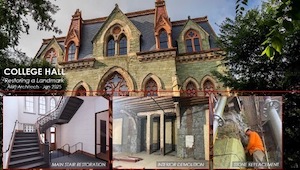
University of Pennsylvania Tour: College Hall
As the first building on the West Philadelphia campus, University of Pennsylvania’s (Penn) College Hall originally housed all of the college’s functions and continues to hold significance in the history of collegiate architecture. In 2023, College Hall underwent a major restoration on the west wing in order to restore the stature, physical presence, and impact. This tour will explore how the restoration includes new, historically appropriate and energy efficient systems and infrastructure; repair of roof and windows, masonry walls, and stone cladding; renovation and upgrades to interior suites, offices, and classrooms; and more accessibility options, including new and updated elevators.
Learning Outcomes:
- Discuss the historical significance of Penn’s oldest campus building.
- Identify aspects of the restoration project that will provide greater accessibility for the campus community.
- Explain how the restoration project aims to achieve LEED Silver to improve campus sustainability.
- Describe the three phases of College Hall’s renovation.
AIA LU 1.5 Unit (SCUP59T005)
AICP CM 1.5 UnitCost: $65
2:45 pm - 4:45 pmOptional Tours | Community College of Philadelphia Main Campus Tour
Community College of Philadelphia Main Campus Tour
The Community College of Philadelphia (CCP) Main Campus tour will begin and end at the Mint Building. On this tour we’ll explore the building, designed in 1898, that first served as the US Treasury’s third Philadelphia Mint and boasts expert craftmanship and raw materials that are likely no longer available. CCP acquired the mint in 1971 and has since maintained the building’s historical integrity. Join us to take a look inside this massive structure and discover how the college uses strategic stewardship to maintain its historic spaces.
Learning Outcomes:
- Identify the strategic stewardship practices that CCP uses to maintain the historic mint building.
- Discuss how the mint building functions as the centerpiece of CCP’s main campus.
- Discuss how the gallery pays tribute to the history of the mint building.
- Explain the importance of preserving historical structures for the benefit of the campus community.
AIA LU 1.75 Unit (SCUP59T006)
AICP CM 1.75 UnitCost: $65
2:50 pm - 3:50 pmConcurrent SessionsA Unique, Integrated Approach to Strategy Execution
Presented by: Christopher Crew, Executive Director Research, Planning & Institutional Effectiveness, San Bernardino Community College District | Nohemy Ornelas, Vice Chancellor of Educational and Student Services, San Bernardino Community College District | Diana Rodriguez, Chancellor, San Bernardino Community College District
The pandemic has underscored the importance of building systems, cultures, and tactical infrastructure that allow organizations to adapt, challenging us to rethink our priorities. We’ll demonstrate a unique approach to strategy execution that ensures accountability and increases institutional investment by empowering all organizational units to understand how their work contributes to the success of a strategic plan. In this session, you’ll learn how to mitigate risks to strategic priorities early and effectively, bridge the chasm between strategy creators and executors, while simultaneously creating a shared experience where everyone feels responsible for facilitating meaningful progress.
Learning Outcomes:
- Outline and approach for building systems, cultures, and tactical infrastructure that allow an organization to respond quickly, efficiently, and dynamically to changing needs and priorities.
- Discuss strategies for ensuring accountability and increasing institutional investment by empowering all organizational units to understand the contributions of their work to strategic plan’s success.
- Track and communicate progress on your strategic plan without relying on spreadsheets, emails, word documents, and static presentations for progress updates.
- Use the objectives and key results goal setting methodology to track progress, create alignment, and encourage engagement around measurable goals.
Planning Types: Strategic Planning
Challenges: Competing Priorities; Planning Alignment
Tags: Alignment; Determining Priorities; Organizational Change; Planning ProcessesAcademic Workforce Housing: Five Tools for Creating Successful Programs
Presented by: Tracy Mansour, Director of Housing Real Estate Services, Princeton University | Julie Skolnicki, Senior Managing Director, Greystar | Victor Van Zandt, CEO & President, Irvine Campus Housing Authority
As populations grow and housing supply falls behind, campuses across North America must consider housing solutions as an important element of recruiting and retaining academic talent. This is collectively known as academic workforce housing. In this session, we’ll outline the five tools of academic workforce housing: assisting with the cost of housing, building housing, buying real estate, lending, and empowering employees to become educated about available options and programs. We will also review several examples of successful academic workforce housing programs, both large and small.
Learning Outcomes:
- List the five tools of academic workforce housing.
- Discuss how a successful academic workforce housing program can help retain and attract academic talent on your campus.
- Educate your campus administrators about the five tools and methods for deploying them to address employee housing shortfalls and needs.
- Identify a minimum of five universities with academic workforce housing with the goal of reaching out to colleagues at other campuses to learn more.
AIA LU 1.0 Unit (SCUP59C2405)
AICP CM 1.0 UnitPlanning Types: Campus Planning
Tags: Facilities Planning; Faculty Housing; Real EstateAll Things Considered: Collaborative Approaches to Academic Program Proposals
Presented by: Ashley Strong-Green, Director of Academic Planning and Assessment, Augusta University | Mickey Williford, Vice President, Augusta University
Academic program misalignment can have serious consequences for institutions, such as a lack of support for competing priorities and unwieldy maintenance of administrative oversight. Students may also obtain degrees that are difficult to explain or find themselves caught in programs that require teach-outs to complete a discontinued course of study. This session will cover how planners can strategically invest institutional resources in academic program proposals to ensure programs are student centered, institutionally aligned, and collaborative. Join us to discover how you can effectively analyze and align programs, engage stakeholders, and manage expectations for academic programs at your institution.
Learning Outcomes:
- Identify key components of academic program proposals.
- Identify key components of an academic program market analysis.
- Outline strategies for ensuring program alignment with institutional and university-system missions.
- Discuss strategies for promoting stakeholder engagement in the development and evaluation of new academic programs.
Planning Types: Academic Planning
Tags: Academic Program Prioritization; Academic Program Review; Determining Academic Program Viability; Student Success
Higher Education, Congress, and the Administration in 2024
Presented by: Sarah Spreitzer, Vice President and Chief of Staff, Government Relations, American Council on Education (ACE)
2024 has been an incredibly busy and difficult year for U.S. higher education. Policymakers must look closely at numerous current issues impacting the campus, including free speech and DEI, the cost of college and federal student aid programs, as well as various federal regulations impacting our institutions, such as Title IX. This session will provide an overview of what has been happening in Congress, with the U.S. Department of Education and other federal agencies, and what the 2024 elections might mean for higher education.
Learning Outcomes:
- Explain the relationship between Congress, the Executive Branch, and higher education and how it is evolving.
- Describe the recent major public policy changes that are affecting higher education institutions and students.
- Assess what these public policy changes might mean for the future of federal support for colleges and students.
- Speculate about the issues that might begin to engage public policy makers in the coming year.
Integrated Planning for an Innovative and Efficient Design Process
Presented by: Bill Davis, Director, Formal Design, North Carolina State University at Raleigh | Charles Mummert, Design Principal, Flad Architects | Elizabeth Strutz, Associate Principal, Director of Process Innovation, Flad Architects
Designing a forward-thinking research building without identified occupants is a bold undertaking. Through an integrated planning and data-driven process, North Carolina State University (NCSU) designed a flexible academic research building, inspiring cross-functional collaboration which has led to increased industry partnerships and innovation. This session will highlight how a collaborative team enabled decision-making throughout the design process to create a future-proofed, energizing hub for academic research. Come learn how to leverage benchmarking, analytics, and an integrated planning process to design successful and innovative buildings on your campus.
Learning Outcomes:
- Outline a stakeholder engagement and integrated planning process that supports innovations in program development.
- Embrace team building activities throughout the design and construction process to develop trust and capitalize on strengths within the design, construction, leadership, occupant, and facilities teams.
- Plan creatively to maximize external industry partner engagement with academic groups.
- Use benchmarking, data, and pre and post-occupancy evaluations to make informed decisions about space allocation and design.
AIA LU 1.0 Unit (SCUP59C2876)
AICP CM 1.0 UnitPlanning Types: Campus Planning
Tags: Academic Facility; Benchmarking; Data; Decision Making; External Collaboration / Partnerships; Facilities Design; Post-Occupancy EvaluationLive, Dine, Thrive: Fueling Futures with a Nexus of Transformative Resources
Presented by: Douglas Gwynn, Director, The Office of Residence Life & Housing, Morgan State University | Jennifer Rittler, , Moody Nolan, Inc. | Casey Smith, Principal, Hord Coplan Macht, Inc. (HCM)
Championing excellence through campus initiatives, Morgan State University’s Thurgood Marshall Hall centralizes diverse student services at the student’s doorstep for a holistic focus on sustainability, wellness, and living-learning. We’ll detail this facility’s multi-phase, multi-story approach to densifying campus housing as enrollment soars, which preserves open space while integrating premier dining experiences. Join us to explore the financial, operational, experiential, and wellness outcomes of a hybrid housing and dining facility that encompasses multiple student services at one thriving HBCU, including planning and design aspects with scalable techniques for elevating campus life.
Learning Outcomes:
- Discuss the collaborative process of combining campus dining, residential, counseling, tutoring, and more into one hybrid campus facility to create a holistic campus experience for wellness and success.
- Articulate the value in designing campus experiences at HBCUs, fostering discussion on their significance, and embedding cultural legacy into campus life.
- Identify scalable design and planning strategies centered on bridging campus housing and dining resources under the common goal of improving student wellbeing.
- Reinforce how major capital improvement projects contribute to significant growth in enrollment, retention, and graduation rates for student success and belonging.
AIA LU/HSW 1.0 Unit (SCUP59C2932)
AICP CM 1.0 UnitPlanning Types: Campus Planning
Tags: Dining Facility; Facilities Design; Facilities Planning; Health and Wellness; Student Housing; Student Services; Student Success; Student Support ServicesResetting the Clock: Duke’s Facility Renewal and Program Enhancement Plan
Presented by: Adem Gusa, Director of Planning & Design, Duke University | Dennis Potter, Principal, Ballinger | Rob Voss, Principal, Ballinger
Aging campus buildings can have a negative impact on student retention and faculty ability to conduct modern research. At the same time, the effects of climate change add urgency to the challenge of managing these outdated campus facilities. We’ll share insights from a nine-building comprehensive facility renewal planning effort to maintain the vitality of aging teaching and research facilities while addressing the physical and programmatic needs of contemporary education. This case study will provide a methodology for developing an actionable facility renewal and program enhancement plan that seamlessly incorporates into an existing sustainability and high-performance building framework.
Learning Outcomes:
- Determine your starting point by prioritizing aging campus buildings based on qualitative and quantitative criteria.
- Embrace and re-envision creative strategies for renewal and modernization of historically-sensitive buildings to position them for the next 100 years.
- Empower diverse stakeholders to understand their role in supporting future-flexible building projects.
- Detail implementation strategies that maximize time and minimize disruption.
AIA LU 1.0 Unit (SCUP59C2985)
AICP CM 1.0 UnitPlanning Types: Campus Planning
Challenges: Dealing with Climate Change
Tags: Renovation; RevitalizationSCUP Excellence Awards | Observed Themes in Higher Education Planning and Design From the 2024 Excellence Award Entries and Recognition of Winners
Presented by: David Cutter, University Landscape Architect, Cornell University | Mani Farhadi, Senior Facilities Planner, Stanford University | Yogesh Saoji, Planning and Urban Design Leader, DLR Group | Ted Watson, Partner, MJMA | David Willoughby, Senior Project Architect, SSOE Group
Awards programs are a way to not only recognize and applaud those individuals and organizations whose achievements exemplify excellence but also to provide learning opportunities for everyone whose lives and passions involve higher education. The 2024 jury members will share observations and trends from this year’s entries and acknowledge award recipients. Award certificates will be distributed at the end of the program.
Learning Outcomes:
- Discover ways in which campus projects can articulate an institution’s mission.
- Recognize innovation in planning, architecture, and landscape architecture.
- Discuss how the effective use of materials and aesthetic choices demonstrate design’s highest qualities.
- Identify opportunities to apply new innovations on your own campus.
AIA LU 1.0 Unit (SCUP59C2403)
AICP CM 1.0 Unit4:00 pm - 5:30 pmSocial in the SCUP Commons6:00 pm - 7:00 pmCommunity Connection Event: Visit the Rocky Stairs!Community Connection Event: Visit the Rocky Stairs!
Join fellow SCUP attendees for a group walk to the iconic Rocky Steps on Monday at 6:00 PM. Meet in the Grand Hall of the Convention Center to walk together, get your steps in, and connect with other attendees.
Tuesday, July 23, 20247:30 am - 4:30 pmConference RegistrationRegistration is located in the Pennsylvania Convention Center, on the 2nd level bridge behind Grand Hall. When entering the convention center from the Marriott (3rd floor access), registration will be straight ahead through the Grand Hall. Street entry is the corner of Arch and 12th.
8:30 am - 9:30 amConcurrent SessionsA School Without Walls: The Architecture of Data Science
Presented by: Phil Bourne, Founding Dean, University of Virginia | Lauren Shirley, Senior Associate, VMDO Architects | Mike Taylor, Principal, Hopkins Architects
Data science is a rapidly developing discipline and serves as a catalyst for the future development and management of institutional faculties. This session will examine the unique engagement process behind the University of Virginia’s (UVA) ‘School without Walls’, as well as its dynamic programming and design for serving an emerging discipline. This project plays a special role in providing a venue for community and industry interaction and research. We’ll explore points of engagement with an expanding faculty throughout the design process, which inspired flexible internal planning, and reflect on the appropriateness of wider contextual influences on the design solution.
Learning Outcomes:
- Evaluate recent stakeholder engagement, identify lessons learned, and set expectations for future engagement processes, especially when working with rapidly evolving groups.
- Anticipate the ways in which emerging programs may challenge institutional norms and processes to chart a course for piloting strategic changes.
- Recognize and promote the impact of architectural identity in creating a successful emerging academic discipline and describe how a contemporary architectural language can find a place on an historic campus.
- Champion the ability of an expanding and outward-facing department to anchor a campus expansion that inspires cross-institutional collaboration.
AIA LU 1.0 Unit (SCUP59C3139)
AICP CM 1.0 UnitPlanning Types: Campus Planning
Tags: Academic Facility; Data; Facilities Design; Workforce DevelopmentAccreditation, Integrated Planning, and Institutional Thriving: A Conversation
Moderated by: Mickey Williford, Vice President, Augusta University
Presented by: Barbara Gellman-Danley, President, Higher Learning Commission | Heather Perfetti,President, Middle States Commission on Higher Education | Larry Schall, President, New England Commission of Higher Education (NECHE)
Taken together, accreditation and integrated planning are mutually reinforcing practices working toward the same ends: institutional health, student success, and innovation in the service of mission. Many of the components of integrated planning are embedded in institutional accrediting body standards, and adopting integrated planning practices can streamline accreditation processes. Join us for a conversation with leaders from three institutional accreditors about planning, accreditation, and the current higher education landscape.
Learning Outcomes:
- Describe how accreditation standards both define and support integrated planning practices.
- Summarize the innovative work of institutional accrediting bodies in support of institutions in a rapidly changing environment.
- List important topics in the current accreditation landscape impacting institutions.
- Explain how accreditation can be leveraged as a process for improving institutional health and student success.
Charting the Future of Education: Expedited, Experiential Strategic Planning
Presented by: Ryan Evans, Senior Service Designer, Tufts University | Colin Gerrity, Design Strategist, Tufts University | Jessica Sears, Director, Academic Planning & Accreditation, Tufts University
As higher education operates in an increasingly complex world, charting a path forward requires a clear vision. An inclusive, comprehensive strategic planning process for educational programs is both just and necessary for institutions to stay relevant. We’ll present a three-phase expedited, practical, inclusive approach that Tufts University used to lead a strategic planning process and develop an educational vision. Join us for experiential, mixed methods to include all voices in the strategic planning process, build community across schools in a decentralized university, and participate in a simulated co-design session.
Learning Outcomes:
- Discuss how to organize an expedited strategic planning process at scale.
- Develop planning sessions that ensure inclusivity through mixed methods.
- Prioritize the facilitation of community building across your institution’s silos.
- Identify strategic themes from large-scale discovery efforts.
Planning Types: Strategic Planning
Challenges: Competing Priorities; Planning Alignment
Tags: Building (or Writing) the Plan; Planning ProcessesFinding the Beauty in Right-sizing the KU Campus
Presented by: Barbara Bichelmeyer, Provost & Executive Vice Chancellor, University of Kansas | Callie Long, Associate Vice Provost, University of Kansas | Mark Reiske, , University of Kansas | Gautam Sundaram, Principal, Perkins&Will
The constraints that universities face in terms of capital, declining enrollment, and surplus capacity in campus facilities causes escalation of deferred maintenance costs. The University of Kansas (KU) master plan focuses on the value and impact of right-sizing the campus through change management and the implementation of a data dashboard. This session will share a sustainable path to establish a culture of transparency in decision making, stakeholder engagement, and environmental stewardship. We’ll outline a data-driven process and lessons learned for leveraging resources, enacting policies that enable change management, and meeting the challenges of implementing a bold cultural shift.
Learning Outcomes:
- Identify the data required for completing an effective space utilization assessment and techniques for analyzing and visualizing large amounts of data in an easy-to-understand manner.
- Outline the leadership and governance structure necessary for engaging in the planning process for successful implementation and breakdown of siloes.
- Recognize the value in leveraging resources and facilities into an actionable list of priorities and a sustainable portfolio of assets.
- Identify the positive impacts and transformations that can result from right-sizing the campus to enhance the student experience, accelerating delivery of near-term projects, and prioritizing mission critical needs.
AIA LU 1.0 Unit (SCUP59C3002)
AICP CM 1.0 UnitPlanning Types: Campus Planning
Challenges: Engaging Stakeholders
Tags: Dashboards; Data; Deferred Maintenance; Facilities Assessment; Master PlanMeasuring Campus Initiative Outcomes of Diversity and High-performance Teams
Presented by: Beyazmin Jimenez, Director of Diversity, Equity, Inclusion, Northeastern University | Ai Kurokawa, Principal, Isgenuity, LLC | Tammy Ngo, Energy Designer, BR+A | Tim Singleton, Assistant Vice President of Capital Projects, Northeastern University
The planning, designing, and building of campus initiatives requires broad and diverse perspectives. This session will present the case for implementing sustainable ways of diversifying the owner, design, and construction industry through emergent data collection. We’ll explore the link between diversity and high-performance of project development, process, and teams, and discuss the developing research and data related to owner satisfaction. Join us to find out how diverse and high-performance teams can add to the continuous improvement of processes and create sustainable changes towards a more diverse pipeline of multiple disciplines that impact the campus.
Learning Outcomes:
- Identify areas where diversity can benefit the entire lifecycle of project development and team structure.
- Make the case for investing in programs, services, and teams that address the need for a more diverse pipeline and help to create higher performing teams.
- Measure the success of implementing diverse, high-performance teams.
- Discuss innovative ways of measuring the outcomes of implementing high-performance teams.
AIA LU 1.0 Unit (SCUP59C3132)
AICP CM 1.0 UnitPlanning Types: Campus Planning
Tags: Diversity Equity and Inclusion (DEI); Project Management; Project Management / DeliveryNavigating Enrollment Challenges Amidst Demographic Shifts
Presented by: José Aviles, Vice Provost for Enrollment Management, Temple University
This session will delve into the evolving landscape of university enrollment, focusing on the impacts of demographic changes. We will explore key trends such as declining birth rates, increasing diversity, academic readiness and shifting socio-economic factors that influence student enrollment patterns. By examining current data, we aim to provide foundational understanding for universities to adapt to these changes, ensuring sustainable enrollment and fostering inclusive educational environments. Join us to engage in a dynamic discussion on addressing the challenges and opportunities presented by these demographic transformations.
Learning Outcomes:
- Describe current demographic shifts affecting university enrollment, including declining birth rates, increasing diversity, academic readiness, and socio-economic factors.
- Engage in data-driven decision making by leveraging the current data to identify and respond to enrollment trends, enabling more effective institutional planning to meet current realities.
- Explore innovative approaches and best practices for adapting to holistic enrollment strategies to meet the needs of a changing student population.
- Discuss how to create more inclusive and supportive educational environments that accommodate diverse student demographics, enhancing overall student success and satisfaction.
Planning, Designing, and Delivering a Fully-electric Dormitory in Toronto
Presented by: Jennifer Adams Peffer, Campus Architect/Director of Architecture, Planning & Project Development, University of Toronto-Scarborough | Steve Donnelly, , IBI Group | Michael Faustini, Project Director, Pomerleau Inc | Deborah Moelis, Principal, Handel Architects LLP
Buildings are a major source of carbon emissions. Campuses need solutions for meeting rigorous energy goals while capturing programmatic needs, improving occupant health and wellness, and meeting bottom-line financial requirements. What are the key steps in planning and delivering a fully-electric, highly-sustainable student residence, dining, and services building? Using the Harmony Commons at the University of Toronto-Scarborough (UTSC) as a case study, we’ll share planning perspectives from administrative, financial, design, and construction standpoints. This session will raise awareness of available solutions for planning and building an all-electric building and provide a pathway for success through integrated planning.
Learning Outcomes:
- Inspire organizational and administrative buy-in for building better towards a net-zero future.
- Share the vital steps that are required to plan and deliver an all-electric, energy-efficient, mixed-use campus building.
- Discuss how to plan directly with your institution’s sustainability department to incorporate new campus standards for future projects.
- Push local contractors and suppliers away from ‘business as usual’ and insist on building better, healthier, more sustainable buildings.
AIA LU/HSW 1.0 Unit (SCUP59C3020)
AICP CM 1.0 UnitPlanning Types: Campus Planning; Sustainability Planning
Challenges: Dealing with Climate Change
Tags: Energy Efficiency and Conservation; Energy Infrastructure; Mixed-Use; Sustainability (Environmental); Zero Net Energy (ZNE)The Architecture of Belonging: Informing Planning Through Social Research
Presented by: Christopher Gluesing, Senior Director, Planning & Project Delivery, Marquette University | Loren Rullman, Principal & Director, Higher Education, Workshop Architects, Inc. | Brian Schermer, Principal & Director, Design Research, Workshop Architects, Inc. | Lora Strigens, VP Planning & Facilities, Marquette University
A sense of belonging is critical for student wellbeing, engagement, and academic success. Social research at Marquette University illuminates how students from different identity groups perceive campus places and informs campus planning priorities. Guided by social research and inclusive placemaking, this session highlights strategies, frameworks, and implications for fostering belonging in diverse campus environments. We’ll explore participatory mapping and other tactics for assessing campus belonging from a physical place perspective as well as proposing research-informed changes for future policy, operational, and design interventions.
Learning Outcomes:
- Communicate to campus decision makers how understanding belonging from a physical place perspective makes a profound impact for a diverse student body.
- Consider insights from participatory mapping to assess how the physical campus influences inclusion and belonging for students of diverse identities.
- Explore innovative strategies to prioritize placemaking for fostering a sense of belonging among students.
- Derive practical insights from Marquette’s experience to demonstrate how social research and inclusive planning can create places that foster social, intellectual, restorative, and symbolic engagement.
AIA LU/HSW 1.0 Unit (SCUP59C3037)
AICP CM 1.0 UnitPlanning Types: Campus Planning; Diversity, Equity, and Inclusion Planning
Tags: Diversity Equity and Inclusion (DEI); Facilities Assessment; Facilities Planning8:30 am - 10:30 amOptional Tours | University of Pennsylvania Tour: Vagelos Lab for Energy, Science, and Technology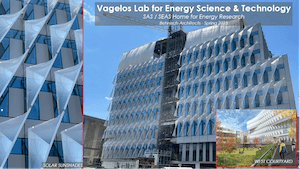
University of Pennsylvania Tour: Vagelos Lab for Energy, Science, and Technology
University of Pennsylvania’s (Penn) Vagelos Laboratory for Energy Science and Technology (VLEST), will house the next generation of energy research programs that integrate expertise from the School of Arts & Sciences and School of Engineering and Applied Science. On this tour, we’ll delve into VLEST’s flexible wet chemistry and optics lab, collaborative spaces, and offices, with a landscaped courtyard linking Walnut Street and Shoemaker Green.
Learning Outcomes:
- Discuss how VLEST will consolidate Penn’s energy research into one building consisting of mostly research labs.
- Evaluate the quality of the indoor and outdoor environments and consider the role they play in attracting students and faculty.
- Assess the ways in which the building’s design and programming supports high-quality learning, research, and collaboration.
- Explain how the building’s LEED Silver target supports campus sustainability goals.
AIA LU 1.5 Unit (SCUP59T007)
AICP CM 1.5 UnitCost: $65
9:50 am - 10:50 amConcurrent SessionsCampus Master Planning as a Catalyst for Broader Economic Development
Presented by: Suzanne Klein, Principal, Associate Vice President, AECOM. | Mark McCormick, President, Middlesex College
In the face of unprecedented changes, Middlesex College is tackling pressing issues to stay relevant by conducting community outreach, developing partnerships to address workforce changes, supporting non-traditional students, and promoting diversity, equity, and inclusion (DEI). We’ll share how Middlesex went beyond enrollment metrics and traditional master planning strategies with an innovative plan that involves the county and community in supporting a variety of campus and regional initiatives. Come learn how you can apply innovative approaches at your institution to transform long-term academic and master planning while leading cultural changes?internally and externally?and prepare your campus for a post-pandemic world.
Learning Outcomes:
- Identify innovative planning opportunities that can promote economic growth for your campus and community.
- Integrate with a broad range of stakeholders in your local community to identify and advance shared planning strategies.
- Advance campus goals beyond academic programs to accommodate changes in pedagogy, student populations, and DEI initiatives.
- Describe a long-term strategy for keeping your institution economically viable and prepared for future challenges.
AIA LU 1.0 Unit (SCUPM23C2139)
AICP CM 1.0 UnitPlanning Types: Campus Planning
Tags: Attracting and Retaining Underrepresented Students; Economic Development; Master Plan; Workforce DevelopmentEngaging Faculty in Classroom Planning and Design
Presented by: Karen Detlefsen, Professor of Philosophy and Education, University of Pennsylvania | Bonnie Netel, Associate Director of Classroom Planning and Design, University of Pennsylvania | Gary Purpura, Associate Vice Provost for Education, University of Pennsylvania
Flexible classroom space is at a premium, making it necessary to link design with utilization to facilitate projected academic program growth. Including faculty in classroom planning and design processes is a vital part of supporting pedagogical innovation in campus learning spaces. This session will highlight recent strategic planning efforts with faculty and staff at the University of Pennsylvania (UPenn) focused on Central Pool classrooms and support for teaching and learning. We’ll share ideas about how to facilitate collaboration between faculty, staff, and experts in the industry to maintain and advance flexible classrooms that support pedagogy and program development.
Learning Outcomes:
- Prioritize bringing multiple stakeholders together to focus on the strategic enhancement and maintenance of classrooms.
- Identify focus areas for analyzing classroom challenges and opportunities.
- Engage in discussions with faculty to develop guiding principles for each focus area.
- Explore multiple tools for understanding classroom design from different perspectives.
AIA LU 1.0 Unit (SCUP59C2974)
AICP CM 1.0 UnitPlanning Types: Campus Planning
Tags: Academic Facility; Faculty; Flexible Learning Spaces; Learning Environments; Teaching and LearningFinding Innovation in the ‘Space Between’
Presented by: Jim Taylor, University Architect, University of Houston | Chip Trageser, Partner, OJB Landscape Architecture | Mrinalini Verma, Associate, Sustainability, OJB Landscape Architecture
As the University of Houston (UH) plans for its second century, the campus is looking to the ‘space between’ buildings, such as landscape and public space, for innovative opportunities to expand cross-disciplinary discovery. This session will share how and why UH is remaking its arrival experience, central quad, and campus woodlands to foster social, physical, and mental wellbeing for the campus community. We’ll discuss how to balance a 100-year stewardship planning framework with the pace of accelerated research and new buildings, demonstrating how both frames of reference can contribute to a campus’s strategic objectives and an innovation mindset.
Learning Outcomes:
- Identify programming and design strategies for creating cross-disciplinary spaces that address the learning and wellbeing needs of both academic and student life.
- Adopt an evidence-based design model that expands the lens of traditional campus planning to include wellness, resilience, inclusion, and other student success outcomes.
- Consider how building language and landscape can be more cohesive, interactive, and resilient to contribute to the wellbeing of the campus community.
- Uncover how landscape elements such as a 100-year tree canopy and other healthy, climate-positive elements can extend the campus planning framework beyond built structures.
AIA LU/HSW 1.0 Unit (SCUPS23C2617)
AICP CM 1.0 UnitPlanning Types: Campus Planning
Tags: Health and Wellness; Landscape / Open Space; Mixed-UseImproving Campus Character and Performance Through Renovation and Adaptive Reuse
Presented by: Ryan Jones, Partner, Lake|Flato | Kerry Phillips, Associate, Lake|Flato | John Scherding, Former University Architect and Director of Sustainability, Trinity University
Breathing new life into old buildings is one of the most sustainable available campus strategies and offers benefits beyond carbon reduction. Renovation and adaptive reuse support a triple bottom line of environmental, financial, and social wellbeing. This session will explore renovation at Trinity University from campus, design, and building perspectives, outlining strategies for enhancing the character and performance of buildings, districts, and the campus. Join us to gain a multi-dimensional understanding of the risks and rewards of renovation and adaptive reuse to help strategically guide comprehensive environmental, financial, and campus planning efforts for colleges and universities.
Learning Outcomes:
- Identify the ways in which renovations and adaptive reuse support a triple bottom line of environmental, financial, and campus stewardship.
- Explain how renovations and adaptive reuse can help reduce carbon emissions for a healthier environment by extending the life of buildings while preserving collegiate identity and minimizing disruption.
- Measure the return on investment of renovations by assessing its risks and rewards from campus, design, and building perspectives.
- Recommend campus planning strategies that maximize the benefits of renovations to enhance the character and performance of buildings as well as impact on student wellbeing.
AIA LU/HSW 1.0 Unit (SCUP59C3010)
AICP CM 1.0 UnitPlanning Types: Campus Planning
Challenges: Dealing with Climate Change
Tags: Adaptive Reuse; RenovationLeading from Reactive Whirlwind to Integrated Strategy
Presented by: Lynn Akey, Vice President for Student Success, Analytics and Integrated Planning, Minnesota State University-Mankato
Intentional leadership is necessary for moving an organization from a revolving state of reactive whirlwind into a future with integrated strategic focus. This session will discuss leadership principles for moving an organization strategically forward during a period of unprecedented challenge and change. You’ll gain insight into using futuring and vision in tandem with internal and external scanning to develop strategic focus, and consider a change-responsive institutional planning framework and strategic planning approach. Come discover how you can help generate the lessons learned and leadership tactics for an intentional future.
Learning Outcomes:
- Discuss current challenges in leading higher education institutions with intentionality.
- Identify leadership principles for developing integrated strategic direction and strategy.
- Gain insight into the use of futuring and visioning in tandem with internal and external scanning to develop strategic focus.
- Review an institutional planning framework and strategic planning approach designed to be responsive to change.
Make Better Decisions: Space Utilization Data Report Illuminates Campus Trends
Presented by: Matt Boyd, Head of Business Development, Occuspace | Sean Franklin, Principal, BuroHappold Engineering
Space utilization data can help us transform physical campus spaces for better, more sustainable design, management, and experience. In this session, we’ll share trends that we compiled over 36 months along with strategic campus planning insights from a 38-institution, 140-space report on utilization. The report data unlocks trends in administrative office, library, fitness center, and dining spaces and helps inform hybrid work policies, space optimization, and sustainability. Join us to begin thinking differently about how to operate spaces for events and programs, use systems to monitor, manage, and staff them, and consider other critical space management needs.
Learning Outcomes:
- Explore and leverage recent space utilization trends by analyzing data from a pre- and post-pandemic perspective.
- Recognize the difference between space utilization data technology and how to formulate a solution comparison including cost, ease of deployment, privacy, and scalability.
- Establish a foundational idea about how to kick-off an internal initiative on your campus for leveraging and optimizing space utilization data.
- Identify and connect with campus leaders who have gone through the process of using space utilization data in order to benefit from their direct experience.
AIA LU 1.0 Unit (SCUP59C3297)
AICP CM 1.0 UnitThe Power of Partnership: Planning for Innovation
Presented by: Lee Erickson, Chief Amplifier, Office of Entrepreneurship and Commercialization, The Pennsylvania State University | Gregory Kufner, University Architect, The Pennsylvania State University | Marilia Rodrigues, Principal, KieranTimberlake | Jason Smith, Partner, KieranTimberlake
Colleges and universities are seeking to engage in equitable planning and design processes that uphold institutional values and reflect the needs of broad, diverse audiences to create spaces that inspire innovation. In this session, we’ll share how to successfully construct and implement an integrated planning, programming, and design process for the delivery of innovation spaces that extend the mission of community-based campus programs and resources. By developing a planning and design process that partners with key stakeholders, institutions and designers can create interdisciplinary spaces that foster collaboration, innovation, and access for the benefit of students, faculty, and the community.
Learning Outcomes:
- Promote innovation and entrepreneurship programs on your campus that share resources with the full spectrum of university and community constituents.
- Detail an engagement and programming process that embraces wide participation and leads to effective and robust decision making.
- Envision an interdisciplinary facility that does not fit within the typical university hierarchy of college-department-program.
- Discuss how to contribute to a vibrant university and community hub, enhance partnerships, and create a destination for outward-facing programs.
Submitted for AIA CES approval.
Using Foresight Tools for Strategic Planning
Presented by: Dana Prymak, Planning and Foresight Consultant, Thompson Rivers University
This session will teach you how to infuse strategic foresight into the strategic planning process to help you understand how future implications can impact present operations and planning. By engaging in foresight activities that promote curiosity rather than certainty, and through a scenario-based game, you’ll leave the session equipped with tools to make space for more ideas and possibilities as they support planning initiatives on your campus. Join us for an interactive workshop that will help you develop a holistic understanding of the current higher education landscape while also considering long-term trends and emerging challenges.
Learning Outcomes:
- Explore practical applications of strategic foresight within the context of institutional research and strategic planning.
- Demonstrate real-world examples of foresight work within strategic planning, highlighting their applicability to your institution.
- Participate in a dynamic foresight scenario-based game to develop the ability to anticipate and build resilience in the face of future challenges and opportunities.
- Engage in discussions on how strategic foresight can amplify the impact of institutional research and planning efforts.
Planning Types: Strategic Planning
Tags: Adaptable Plans; Determining Priorities; Planning Processes; Scenario PlanningWhat’s In It For Me? The Benefits of Data Asset Management
Presented by: Elizabeth Greaney, Chief Business/Financial Strategy Officer, Montgomery College | Surayya Johnson, Director of the Office of Student Life, Montgomery College | Paul Miller, Professional Development Director, Montgomery College | Nadine Porter, Deputy Chief Analytics and Insights Officer, Montgomery College
Data is a pillar for organizational mission and for driving results. Planners must not undervalue the importance of data-informed decision-making and its link to institutional wellbeing and sustainability. Montgomery College’s (MC) integrated planning incorporated robust community input that culminated into a successfully built plan that supports agility and flexibility. MC continuously reminds and educates the campus community about ‘what’s in it for me’ and the benefits of collaborating on this growth mindset. This session will demonstrate how data-driven planning fosters ownership, accountability, buy-in, and increases effectiveness and trustworthiness of institutional decision-making, resulting in positive outcomes and decreased risk.
Learning Outcomes:
- Build a business case and explain why data asset management is important.
- Elevate institutional discussions to foster collaboration and support a data asset management plan at your institution.
- Share best practices, ecosystem development tips, insights, and programmatic examples from MC’s data journey and data asset management efforts.
- Answer the question, ‘what’s in it for me?’ from an institutional perspective.
Planning Types: Institutional Effectiveness Planning
Tags: Adaptable Plans; Assessment / Analytics; Data; Decision Making11:10 am - 12:10 pmConcurrent SessionsA Multi-institutional Collaboration to Meet Healthcare Industry Workforce Needs
Presented by: Joel Frater, former Dean of Student Services, Rochester General College of Health Careers and current Vice President of Student Affairs, Northern Virginia Community College
Community colleges are seeing a decline in enrollment while the healthcare sector is experiencing a chronic workforce shortage. These phenomena require us to examine current and future industry needs to inform the development of a sustainable model. This session will highlight a multi-institutional collaboration, informed by Labor Market Intelligence (LMI), that aligns with strategic priorities and seeks to mitigate a critical regional workforce shortage while positioning for long-term sustainability. Come learn strategies for developing consortium agreements among diverse institutions and how to use LMI to inform sustainable collaborative models to address workforce needs and boost enrollment.
Learning Outcomes:
- Demonstrate how to use integrated planning tools to facilitate change in the workforce and capitalize on opportunities for multi-institutional collaboration.
- Capitalize on your institution’s mission while identifying commonalities with partner institutions through a focus on regional workforce needs as the main driver.
- Embed planning priorities and intended outcomes that are mutually beneficial to partner institutions and the students they serve while underscoring the central role higher education plays in meeting current and future workforce needs.
- Incorporate LMI analysis principles into planning through the application of collaborative strategies.
AIA LU 1.0 Unit (SCUP59C2913)
AICP CM 1.0 UnitPlanning Types: Institutional Effectiveness Planning
Tags: Community College; Economic Development; External Collaboration / Partnerships; Workforce DevelopmentBest Practices for Campuswide Mobility Planning
Presented by: Frances Ritchie, Associate, Sam Schwartz Engineering | Nicole Vahl, Health and Science Program Manager, Illinois Medical District | Sarah White, Campus Planner, Northwestern University
Recent years have seen mobility pattern shifts, new micromobility devices, such as e-scooters and e-bikes, and surging traffic deaths. Higher education campuses are uniquely placed to implement best-practice pedestrian and bicycle infrastructure, but they face different opportunities and constraints. This session will discuss how Northwestern University and Illinois Medical District approach transportation challenges and strategies for campus mobility planning and policy development around adapting and improving safety. Come delve into these two campuses’ mobility planning efforts to discover best practices for planning processes, policy language, infrastructure design, and integrated implementation and operations strategies.
Learning Outcomes:
- Advocate for specific new pedestrian and bicycle infrastructure on campus and adjacent to campus to improve safety.
- Discuss best practices for updating policies that address mobility challenges and safety issues specific to your campus.
- Outline a strong framework and rationale for initiating a campuswide mobility planning effort.
- Pursue funding with a higher likelihood of success that is targeted to the specific and necessary campus mobility infrastructure changes.
AIA LU/HSW 1.0 Unit (SCUP59C2877)
AICP CM 1.0 UnitPlanning Types: Campus Planning
Tags: Landscape / Open Space; Transportation and ParkingBison Blueprint: Building An Integrated Planning Culture At Gallaudet
Presented by: Kristin Mulrooney, Strategic Planning & Integration Officer, Gallaudet University | Guthrie Nutter, Strategic Communications and Planning Manager, Gallaudet University | Dr. Jennifer Powers, Sr. Project Manager, Gallaudet University
A successful integrated plan requires the broad engagement within an institution. In this session, we’ll demonstrate how we taught key leaders about integrated planning by breaking down the integrated planning process to enable plan creation for different programs and divisions. We’ll share our Bison Integrative Planning Toolkit, which provides an ‘evergreen’ resource for onboarding colleagues into the integrated planning process and also serves as a manual that walks through the process of creating a plan. Join us to gain teachable, no-cost resources that you can easily disseminate at your institution to foster necessary skills for building an integrated planning culture.
Learning Outcomes:
- Define what type or degree of integrated planning culture exists at your home institution.
- Propose interactive work sessions to help units at your institution develop integrative strategic goals.
- Discuss how to customize an interactive planning toolkit that meets the needs of your institution.
- Detail a communication rollout of an integrated strategic plan to your institution’s community.
Planning Types: Strategic Planning
Tags: Building (or Writing) the Plan; Institutional Planning; Planning Processes; Preparing to PlanIntegrated Campus Master Planning for Unprecedented Capital Improvements
Presented by: Michael Hoff, Vice Provost, East Tennessee State University
Universities are complex organizations that must align many different types of plans to maximize success. Integrated planning is vital to the master planning process because it requires support of all university constituencies. This session will describe how integrated planning and the development and implementation process of the East Tennessee State University (ETSU) master plan enabled ETSU to receive external support of more than $400 million for new and renovated capital projects over the past decade. We’ll share how to plan across units, gain constituency support, take steps for project proposals that gain state support through competitive approval processes, and ensure the master plan is the foundation for university growth.
Learning Outcomes:
- Discuss how to develop a campus master plan that maximizes the potential for university growth.
- Discuss how to develop a strategic plan that supports the master plan.
- Take steps to ensure that unit plans are represented in the master plan and support university growth.
- Engage with state agencies, local communities, students, faculty, and staff to generate and maintain support for campus fiscal development.
AIA LU 1.0 Unit (SCUP59C3147)
AICP CM 1.0 UnitPlanning Types: Campus Planning
Tags: Capital Planning; Master Plan
Leadership Lessons Learned: Assessing Strengths, Skills, and Knowledge
Presented by: Barbara Gellman-Danley, President, Higher Learning Commission
Higher education leaders carry the responsibility of vision and building new strategic directions for colleges and universities. This session will provide a deep look into one leader’s decades of experience and share ways to become a strong, successful administrator at any level. Come learn the ways in which leadership is more than a title and discover how to assess your own skills and knowledge, as well as the best ways to position those findings for current and future roles.
Learning Outcomes:
- Share the list of lessons learned with direct reports on campus to determine which apply to the team and methods to complement each other’s strengths.
- Identify lessons learned in your own career and find opportunities to pass them down to others on campus.
- Self-identify areas that need improvement and develop a coordinated continuous learning plan.
- Reengineer your resume and biography to develop a list of skills and knowledge learned across a career, repositioning from titles to “what you know and can do” to demonstrate your leadership preparedness.
Leveraging Progressive Design-Build Delivery for Capital Projects
Presented by: Brandon Dekker, Principal, CannonDesign | Brian Pratt, Associate Vice Chancellor and Campus Architect, University of California-Irvine | Marijke Smit, SVP, Strategies, CannonDesign | Khristina Stone, Preconstruction Manager, Hensel Phelps Construction Co.
California recently passed legislation that permits its public entities to leverage Progressive Design-Build (PDB) delivery methods for capital projects. Other states are following suit, which will upend traditional planning and design processes. This session will outline necessary changes to pre-design planning processes and considerations to set projects up for success under a PDB delivery model. We’ll share tools that will help you achieve better outcomes in your planning and design processes, including lessons learned from our own successes and challenges of using PDB as a project delivery method.
Learning Outcomes:
- Evaluate the pros and cons of different PDB models relative to institutional objectives, culture, and project planning parameters (benefits, client control, risks, and returns on investment).
- List examples of how the PDB model changes project objectives, planning scope, predesign services, and deliverables that inform your understanding of expectations, services scopes, timelines, budgets, and selection criteria.
- Support your discussions with internal and external stakeholders by presenting evidence in the form of concrete case studies and quantitative metrics.
- Outline the actions you need to take to position planning teams, leadership, and your program for success.
AIA LU 1.0 Unit (SCUP59C3036)
AICP CM 1.0 UnitPlanning Types: Campus Planning
Tags: Capital Planning; Design-Build; Integrated Project Delivery; Project Management; Project Management / DeliveryOne Size Doesn’t Fit All: Planning for Neurodiverse Campus Communities
Presented by: Winston Bao, Associate, LPA, Inc. | William Franklin, Vice President, Student Affairs, California State University-Dominguez Hills | Debra Hammond, Executive Director, University Student Union, California State University-Northridge | Kimari Phillips, Research Manager, LPA, Inc.
No two individuals are ‘wired’ to process information or stimuli in their environment in the same way, yet the design of campus environments often focuses on the ‘norm’. Meeting diverse needs on a spectrum of neurodiversity is an emerging concern for educational planning and design. We’ll explore how physical environments can impact the educational experience by planning for neurodiversity and identify planning considerations that support equitable, inclusive campus environments to meet diverse social, emotional, and cognitive needs. This session aims to increase awareness, fluency, and sensitivity to assist planning efforts addressing neurodiversity that positively impact the built environment and the holistic experience and wellbeing of the campus community.
Learning Outcomes:
- Identify common traits of neurodiversity and neurodivergence and the related challenges that you can address through thoughtful, inclusive design.
- Keep the campus experience and wellbeing of neurodiverse students, staff, faculty, and visitors in mind, and engage them in the design process.
- Consider how planning and design can contribute to a more inclusive campus environment and accommodate the needs of diverse users.
- Apply evidence-based design strategies to meet specific needs of neurodiverse individuals and help the campus community flourish overall.
AIA LU/HSW 1.0 Unit (SCUP59C3155)
AICP CM 1.0 UnitPlanning Types: Campus Planning; Diversity, Equity, and Inclusion Planning
Tags: Accessibility; Diversity Equity and Inclusion (DEI); Facilities Design; Facilities Planning; Health and Wellness; Student Support ServicesVisioning for Campus Planning to Enhance the Student Experience
Presented by: Christian Bushong, Associate, Gensler | Juan Familia, Student, Thomas Jefferson University | Ryan Glick, Adjunct Professor of Architecture, Third Year Design Studio Coordinator, Thomas Jefferson University; Project Architect, Gensler | Melissa Maisey, Student, Moore College of Art and Design | Jill Sirota, Design Manager, Associate, Gensler | Melanie Taylor, Student, Drexel University
This student panel will exchange ideas on the impacts of capital planning in three phases: on campus today, at graduation, and ten years in the future. An educator and design expert will join students from Philadelphia-based institutions to share their perspectives on how short and long-term visioning for campus planning can create more engaging, inclusive, and impactful student experiences. Planners are considering the experiences students seek while on campus, and how perceived impressions differ from the reality of renovations. This interactive discussion will offer live feedback on trends and issues around recruitment, retention, campus culture, and sense of belonging.
Learning Outcomes:
- Discuss how to align cross-functional integrated planning goals with student priorities.
- Detail methods of gathering student feedback to inform resource allocation and data-driven design decisions.
- Focus on the future and next generation of leaders by engaging students while they are matriculating in real time.
- Evaluate how student feedback and current research tracks student insights into recruitment, retention, and alumni relations.
AIA LU 1.0 Unit (SCUP59C3081)
AICP CM 1.0 UnitPlanning Types: Campus Planning
Challenges: Student Success, Retention, and Graduation
Tags: Facilities Planning; Student Engagement; Student Experience; Student Life / Student AffairsWhat Students Want: Lessons and Outcomes From a Student Center ‘In Use’
Presented by: Alexandra Boissonneault, Associate, Montgomery Sisam Architects | Jamie King, Managing Director, Sheridan Student Union | Daniel Ling, Director and Principal, Montgomery Sisam Architects
Students have long valued a holistic post-secondary experience. It is important to look beyond capacity building and invest in spaces that create an engaging campus culture. This session will look critically at contemporary trends in student center planning, programming, and design as well as their outcomes, both intended and in use, drawing on findings from a recent post-occupancy evaluation of a new student life center. We’ll provide you with the opportunity to reflect analytically on programming and design assumptions in the context of actual in-use building outcomes, and offer successful examples of student engagement and feedback mechanisms.
Learning Outcomes:
- Identify and introduce new opportunities for student engagement pre- and post-development of campus spaces.
- Identify and describe the characteristics of viable, effective multi-functional campus buildings.
- Evaluate evidence on spontaneous and unplanned uses in the design of multi-purpose spaces.
- Apply a hybrid learning lens to long-term master planning processes.
AIA LU 1.0 Unit (SCUP59C3193)
AICP CM 1.0 Unit12:10 pm - 1:30 pmLunch in the SCUP CommonsJoin the Community Conversation roundtables within the SCUP Commons, where you can:
- Participate in thought-provoking discussions with experts and peers
- Share experiences and gain fresh insights
- Discover new ideas, resources, and solutions
- Build meaningful connections around common interests
- Enjoy casual, honest conversations in an informal setting
Look for the dedicated topic tables and join the conversation. Expand your network, tap into our collective wisdom, and let your voice be heard!
12:50 pm - 2:40 pmOptional Tours | Community College of Philadelphia Career and Advanced Technology Center Tour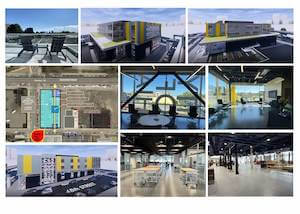
Community College of Philadelphia Career and Advanced Technology Center Tour
The tour will begin and end at Community College of Philadelphia’s (CCP) new Career and Advanced Technology Center (CATC). The course offerings at CATC focus on career readiness and creating a thriving workforce in the city’s transportation, manufacturing, and health care fields. This tour will feature the three-story building’s state-of-the-art teaching and learning facilities, shared lounges with cityscape views, automotive laboratories, and study spaces.
Learning Outcomes:
- Recognize the importance of bringing in daylight and cityscape views to a teaching and learning facility.
- Discuss how the CATC’s program offerings support the regional economy and workforce.
- Explore cutting-edge automotive laboratories and detail the advances in technology and pedagogy for automotive workforce education.
- Explain how CATC supports students with learning environments and course offerings that foster career readiness and academic success.
AIA LU 1.5 Unit (SCUP59T008)
AICP CM 1.5 UnitCost: $65
1:30 pm - 2:30 pmConcurrent SessionsBuilding a New Medical School With Integrated Project Delivery
Presented by: Jacqueline Norman, Campus Architect, University of California-Riverside | Linda Reimann, Chief of Staff and Assistant Dean, Strategic Innitatives, University of California-Riverside | James Simeo, Principal, CO Architects
Effective means and methods for building projects result in campus environments that advance institutional missions and goals, ensure student success, and support campus communities working for change. This session will demonstrate how administrators, planners, and designers joined forces to coordinate an integrated project delivery to build a new medical school that promotes success for a diverse student body. We’ll highlight strategies for prioritizing during the decision-making process, including identifying physical space needs to support program initiatives, developing planning guidelines for those needs, and enacting a design-build process to meet those needs in the built environment.
Learning Outcomes:
- Quantify built environment needs for student engagement and advancement.
- Discuss the development of project program documents that link learning initiatives with the built environment and an overall cost model.
- Apply a design-build methodology to plan for implementation of a project design process and contractor selection.
- Identify real-life designs of learning spaces and environments that promote student learning.
AIA LU 1.0 Unit (SCUP59C2960)
AICP CM 1.0 UnitPlanning Types: Campus Planning
Tags: Design-Build; Facilities Design; Facilities Planning; Integrated Project Delivery; Learning Environments; Project Management; Project Management / Delivery; Student SuccessChange Management: Leveraging Accreditation in a Challenging Environment
Presented by: Heather Perfetti, President, Middle States Commission on Higher Education | Tracey Schneider, Senior Vice President for Legal Affairs and General Counsel, Middle States Commission on Higher Education
Institutional representatives must consider a variety of perspectives when managing change in the current higher education environment. This session will explore the many ways in which accreditation is an ideal perspective for supporting institutional change. We’ll discuss how to leverage the holistic cycle of accreditation, along with a laser focus on regulatory, policy, and legal issues, in ways that positively influence the future direction of institutions, focus on student success, and drive institutional mission.
Learning Outcomes:
- Describe how accreditation can support effective change management at your institution.
- Reassess and redesign the approach to accreditation activities at your institution.
- Explain how to drive a renewed model of accreditation that is based on institutional priorities and the realities that institutions currently face.
- Rally all constituents to leverage the holistic cycle of accreditation while ensuring alignment with the changing regulatory, policy, and legal demands.
Complexity and Contradiction: Integrating Decarbonization Planning and Actions
Presented by: Jennifer Garman, Architect and Regenerative Design Lead, Cuningham Group Architecture, Inc. | Jeffrey Mandyck, Principal, Cuningham Group Architecture, Inc. | Marc Partridge, University Architect, Capital Project Management, University of Minnesota-Twin Cities | Shane Stennes, Systemwide Chief Sustainability Officer, University of Minnesota-Twin Cities
Campus decarbonization requires flexible and adaptable approaches at all scales. Determining the appropriate mix of action plans helps campuses prepare for an increasing number of existing building performance and carbon reduction policies. The University of Minnesota’s (U of M) multi-campus system, one of the largest in the U.S., is planning and taking actions to become net zero. This unconventional approach addresses decarbonization across regional climates, campus-systems, and building scales. In this session, we’ll provide transferrable decarbonization planning processes, best practices, and lessons learned from actions across geographical regions, diverse campus-wide energy systems, and existing facilities net zero strategies.
Learning Outcomes:
- Determine appropriate campus specific project teams, stakeholders, and planning processes to define campuswide and individual building decarbonization.
- Choose outcomes-based plans with flexible and adaptable actions that foster cultural changes and build buy-in.
- Assess existing and forthcoming state, county, or city decarbonization policies and regulations and their impact on campus decarbonization plans.
- Discuss how to build a prototype predesign decarbonization process for existing facilities by collaborating with internal stakeholders and external design partners.
AIA LU/HSW 1.0 Unit (SCUP59C3001)
AICP CM 1.0 UnitPlanning Types: Campus Planning; Sustainability Planning
Challenges: Dealing with Climate Change
Tags: Carbon Neutral; Energy Infrastructure; Zero Net Energy (ZNE)Diverse Perspectives on Student Housing Affordability
Presented by: Emanuel Gunn, Associate Vice President/Public Private Partnership, American Campus Communities | Ryan Jensen, Project Manager, Brailsford & Dunlavey | Heidi Scribner, Associate Vice Chancellor, Auxiliary Services, University of California-Riverside | Tim M. Stevens, Principal, SCB
Housing insecurity is becoming a more and more frequent issue across many colleges and universities. The University of California System, the largest in the nation, reported that eight percent of their undergraduate population lacks a safe, regular, and adequate nighttime place to stay and sleep. Join our diverse panel of student housing experts to discuss critical impacts, observations, policies, and considerations around the ever-expanding cost burden in accessing a college degree.
Learning Outcomes:
- Explain how student housing contributes to the overall accessibility of higher education and student retention, data associated with scope of housing insecurity, and advancing policies to mitigate the issue.
- Detail strategies for implementing affordability from the design, programming, and planning disciplines, addressing issues of scale, efficiency, density, and community amenities.
- Detail strategies for implementing affordability in construction, including prefabrication, modular, and project delivery models.
- Discuss strategies on operations and maintenance, comparing issues faced by public institutions versus privately-operated facilities.
AIA LU 1.0 Unit (SCUP59C2413)
AICP CM 1.0 UnitGood, Better, Best: A Collaborative Approach for High-impact Program Proposals
Presented by: Michael Rothlisberger, Assistant Vice Chancellor for Academic Strategy and Analytics, University System of Georgia
The University System of Georgia’s (USG) academic program proposal process aims to align program development with system-wide strategic goals while increasing graduate employability to meet workforce demands. This session will illustrate how USG’s well-oiled standardized system prioritizes interdepartmental collaboration and iteration, drawing on diverse perspectives to create new degree programs across 26 universities. Come learn about how our “Good, Better, Best” approach uses a detailed application and budget template to generate high-impact programs that prepare students to enter an ever-evolving workforce.
Learning Outcomes:
- Assess the strengths and weaknesses of current proposal development processes at your institution, drawing on insights from USG’s collaborative model.
- Identify key stakeholders within your institution who would benefit from engaging in a collaborative academic program proposal development approach.
- Discuss how to adapt the “Good, Better, Best” approach to an iterative review process within your institutional context to elevate proposal quality.
- Articulate the value of high-impact program development to your institution and state workforce, demonstrating alignment with strategic priorities.
Harnessing the Disruptive Power of Collaborative Intelligence
Presented by: Linda Baer, Principal, Strategic Initiatives, Inc. | Paul Leblanc, President, Southern New Hampshire University | donald norris, president, Strategic Initiatives, Inc. | George Siemens, Chief Data Scientist, Southern New Hampshire University
This session will illustrate how Artificial Intelligence (AI) and Human Intelligence (HI) combine to create Collaborative Intelligence (CI), which will transform and disrupt every process and practice it touches. Southern New Hampshire University (SNHU) is building on its track record of preparing students for the future by leveraging CI and a clean sheet design approach to create a revolutionary new instructional model. To harness the power of CI, institutions must reinvent their approach for crafting and executing strategy to create a sense of urgency for change, engage many participants, provide transformation tools, and change culture.
Learning Outcomes:
- Explain the potential of CI and the need to craft an AI/HI strategy that drives and aligns with other institutional strategies.
- Discuss how to reshape existing processes and practices for crafting and executing strategies so that they mobilize the forces of transformative change.
- Based on SNHU’s work, describe how to simultaneously acquire skills in AI/HI, improve point solutions using AI, and launch transformative CI-driven initiatives.
- Explain the potential for the continuing, systemic changes in the global ecosystem for knowledge, work, and learning, and how they will affect higher education.
Planning Types: Strategic Planning
Challenges: Change Management
Tags: Artifical Intelligence (AI); Change Management; Disruptive Change; InnovationKeep Focus: Improve Outcomes and Engagement With a Communications Calendar
Presented by: Tina Dee, Director of Strategic Initiatives, Muskegon Community College
Focusing on a specific goal each month increases strategic plan success. Tactical discussions among stakeholders enhance ownership, identify more effective strategies, and ensure adaptations to the strategic plan as needed to meet evolving needs. This session will illustrate how aligning strategic goals with a monthly ‘goal in focus’ communications calendar can improve goal attainment by prioritizing focus, engagement, and ownership. Join us to find out how you can use a monthly communications calendar to achieve better outcomes for your strategic plan.
Learning Outcomes:
- Develop a monthly editorial and communications schedule.
- Discuss how a communications calendar expands employee awareness, engagement, and sense of ownership of the strategic plan.
- Identify ways to align media relations and social media management efforts with the strategic plan.
- Choose a monthly ‘goal in focus’ to increase stakeholder engagement with the strategic plan.
Planning Types: Strategic Planning
Challenges: Engaging Stakeholders
Tags: Adaptable Plans; Adherence to Plans; Alignment; Engaging Stakeholders; Implementation; Monitoring the Plan; Planning ProcessesReimagining OSU’s Campus Gateway District Through P3 Integrated Planning
Presented by: Matt Hansen, President, Campus Partners for Community Urban Revitalization | Keith Myers, Associate Vice President, Physical Planning and Real Estate, Ohio State University-Main Campus | Kevin Smith, Partner, Robert A.M. Stern Architects | Graham Wyatt, Partner, Robert A.M. Stern Architects
In order to reimagine and capitalize on the potential of its campus gateway, The Ohio State University (OSU) employed specific planning and development processes to achieve successful outcomes. A decade of public-private planning, land acquisition, rezoning, infrastructure upgrades, preservation, and academic and mixed-use development has transformed OSU’s High Street entrance into an active and economically-viable campus gateway district. In this session we’ll show you how to think beyond campus boundaries and traditional planning methods to transform town and gown interfaces.
Learning Outcomes:
- Discuss how relocating, renovating, and planning for new facilities within a mixed-use campus gateway district can optimize space use and support result in significant on-campus backfill benefits.
- Prioritize attractive, programmable, and economically viable new and renovated mixed-use development and open spaces when planning around your campus edge to strengthen town and gown relations.
- Identify a variety of public-private partnership (P3) financial strategies for mixed-use, campus-edge development that the institution can support with capital and lifecycle financial modeling.
- Identify a variety of P3 development strategies to achieve academic institution strategic goals while providing long-term benefit to the surrounding community.
AIA LU 1.0 Unit (SCUP59C3099)
AICP CM 1.0 UnitPlanning Types: Campus Planning
Tags: Capital Funding; Capital Planning; Facilities Funding; Mixed-Use; Public-Private Partnerships (P3); Renovation; Town and GownRelationship Building: Strategies for Inclusive, Student-Centered Design
Presented by: Christopher Gluesing, Senior Director, Planning & Project Delivery, Marquette University | Kathleen Kugi-Tom, Senior Project Manager, Marquette University | Katherine Nichols, Principal, BNIM Architects | James Pfeiffer, Principal, BNIM Architects
The Dr. EJ and Margaret O’Brien Hall at Marquette University showcases the ways in which relationship building between people, disciplines, space types, and contexts advances design to achieve human-purposed, inclusive outcomes for the department and campus. In this session, we’ll discuss the new convening, inclusive, student-focused hub for business and innovation leadership and demonstrate how it exemplifies the core tenets of relationship building in navigating campus engagement, design process, and future success. Join us to learn useful strategies around relationship building within your campus communities, collaborative design processes for hybrid learning, intersecting purpose-built and loose-fit design, and post-pandemic student wellbeing.
Learning Outcomes:
- Discuss how to strengthen stakeholder relationships through an inclusive engagement process addressing programmatic and user needs and establishing a design vision that aligns with campus identity and values.
- Identify the challenges of remote and hybrid education and consider how a collaborative, integrated design process can maintain key relationships and project goals.
- Explain how a student-centered design process that co-locates purpose-built departmental and learning spaces with interdisciplinary learning and social spaces can promote campus, community, and regional connections for wellbeing and belonging.
- Describe design features and programming of welcoming, inclusive spaces that support interdisciplinary collaboration across different schools and colleges.
AIA LU/HSW 1.0 Unit (SCUPC23C2560)
AICP CM 1.0 UnitPlanning Types: Campus Planning
Tags: Diversity Equity and Inclusion (DEI); Facilities Design; Flexible Learning Spaces; Hybrid Learning; Student Success2:50 pm - 3:50 pmConcurrent SessionsCollaboration in Strategic Resource Alignment
Presented by: Brittany Cipollone, Director of Integrated Planning and Effectiveness, Augusta University | Tara Montroy, Assistant Vice President of Budget Planning and Operations, Augusta University
A codified planning and resource alignment process can elevate institutional planning culture and help ensure the alignment of resources to the strategic plan. We’ll show how planning and resource alignment are part of a systematic, data-informed, and integrated approach to achieving an institution’s mission and vision. You’ll walk away from this session with templates and logistical knowledge for effective implementation of annual planning and resource alignment as a part of an institutional integrated planning process.
Learning Outcomes:
- Evaluate planning activity timing against other institutional activities to synchronize processes.
- Identify opportunities to further integrate planning and resource alignment.
- Identify opportunities to enhance current planning-related tools and resources.
- Strengthen current collaborative efforts and enhance your institution’s culture of planning.
Planning Types: Strategic Planning
Challenges: Planning Alignment
Tags: Alignment; Implementation; Institutional Effectiveness; Mission / Vision / IdentityDiversify the STEM Experience Through Integrated Planning
Presented by: Jason Franklin, AVP for Planning, Construction and Real Estate, Portland State University | Athena Rilatos, Graduate Student, Master of Architecture, Portland State University | Todd Rosenstiel, Dean, Portland State University | Amy Running, Associate Principal, Bora Architects
Portland State University’s (PSU) integrated planning process involved multiple departments, coalesced institutional and strategic goals, bolstered educational and industry ties, and focused on diversity to dismantle barriers within STEM disciplines. PSU pioneered a planning and design process for its new science building that amplified underrepresented voices to diversify the STEM workforce, dramatically shifting design outcomes and student pathways. This session will address how institutions can prioritize broad engagement in planning, and how foregrounding input from underrepresented groups can alter preconceptions and reveal the challenges that exist in institutional operational norms that inhibit student success.
Learning Outcomes:
- Describe a process for engaging a diverse student cohort at the earliest stages of planning and design that accounts for an adjusted project timeline and allows planners to navigate potentially unforeseen challenges.
- Translate an institutional goal for equity into concrete steps that integrates students, staff, faculty, and administration in a planning process that is committed to changing outcomes.
- Identify barriers for students of minority backgrounds in traditionally white and male-dominated STEM fields such as STEM and acquire strategies for addressing them.
- Interrupt preconceptions about the architectural process and the nature of a science learning environment to better serve a more diverse student population, and ultimately a more diverse workforce.
AIA LU 1.0 Unit (SCUP59C3072)
AICP CM 1.0 UnitPlanning Types: Campus Planning; Diversity, Equity, and Inclusion Planning
Challenges: Engaging Stakeholders
Tags: Diversity Equity and Inclusion (DEI); Facilities Design; Science / Engineering; Science Technology Engineering and Math (STEM); Student SuccessExploring History of Place Through Inclusive Planning and Programming
Presented by: Yvonne Choe, Architect, Partner, DIALOG | John Souleles, Partner, DIALOG
The growth of the University of Calgary’s Veterinary Medicine program has been a catalyst for several initiatives on campus, including the development of a long range plan, creation of an inclusive program, and development of micro degrees. The process of engagement, programming, and design at Vet Med was critical for understanding the urgent needs of the profession and students while being mindful and respectful of the history of place and the indigenous community. This session show how connecting the history of place at a campus master planning and programming level fosters opportunities, success, health, and wellbeing for each student.
Learning Outcomes:
- Initiate meaningful conversations early on in the planning and programming process and explore opportunities to prioritize heritage, diversity, and wellbeing.
- Use programming tools to gain early understanding of project needs while inviting storytelling and ceremony into the process.
- Identify opportunities for student, faculty and staff inclusion, connection and wellness.
- Find alignment between planning objectives and long-term ecological health and sustainability goals.
AIA LU/HSW 1.0 Unit (SCUPP24C2846)
AICP CM 1.0 UnitPlanning Types: Campus Planning
Tags: Diversity Equity and Inclusion (DEI); Facilities Planning; Health and Wellness; Medical / Allied Health Education; Medical / Allied Health FacilityInside Out: Understanding Space and Building Consensus in a Dynamic Environment
Presented by: Jared Parylo, Assistant Director, Planning, The City University of New York | Lilia Sodre, Space Planner . Strategic Designer, CUNY
Building consensus is challenging, but planners who are empowered by knowledge of their campus’s space can make informed decisions on how to plan for its most efficient usage. Through an integrated, inclusive, and tactile study of space, we’ll share how diverse groups can help build a new baseline of knowledge. Come learn how to develop a grassroots approach on your campus by applying a space occupancy and utilization study that uses actual data and analytical graphics to aid in decision making and strategic planning on a small and large scale.
Learning Outcomes:
- Based on your institution’s specific needs, use reasoning and justification as a foundation for a self-driven occupancy and utilization study.
- Detail a blueprint for a grassroots process, using internal assets and resources to measure space utilization.
- Outline a strong model and methodology for effective engagement, workflows, and preliminary conclusions for a space occupancy and utilization study.
- Discuss how to integrate a space study into space management and use this as a building block for a robust planning process that informs decision on policymaking and the development of overall institutional strategic goals.
AIA LU 1.0 Unit (SCUP59C3011)
AICP CM 1.0 UnitPlanning Types: Campus Planning
Challenges: Engaging Stakeholders
Tags: Post-Occupancy Evaluation; Space Assessment; Space ManagementLeveraging Your Resources to Build a Comprehensive, Data-driven Strategic Plan
Presented by: Gianna Darrow, Executive Director of Data Analytics and Strategic Planning, Rutgers University-Camden | Jimmy Jung, Senior Vice Chancellor, Rutgers University-Camden | Marsha Lowery, Vice Chancellor for Student Academic Success, Rutgers University-Camden
Institutions can align their needs with innovation and insight by creating a strong integration of data and research processes for a data-driven, impactful strategic plan. We’ll demonstrate how to build a data-driven strategic plan by applying research methodologies, leveraging public data, optimizing institutional data, and constructing a content analysis. You’ll come away from this session with a blueprint to integrate into your own planning processes that will bolster your data skills and provide you with a mechanism to weave together planning with data-driven insights.
Learning Outcomes:
- Identify two or more key goals behind strategic planning, building an optimal committee, and bridging data insights to the pillars of a strategic plan.
- Identify two to three qualitative data collection methodologies that best align with the needs of your planning purposes and process.
- Identify four or more key institutional data reports and public data sources to leverage for your strategic planning process.
- Construct a content analysis to synthesize the wealth of data collected into organized, thematic bullets.
Planning Types: Strategic Planning
Tags: Assessment / Analytics; Data; Planning ProcessesOpen-concept Faculty Neighborhoods for More Collaboration and Communication
Presented by: Dan Eikenberry, Associate Principal, Perkins&Will | Margaret Lutton, Executive Director, Institutional and Strategic Development, Tarrant County College District
Traditional, siloed faculty offices are no longer the best option for serving student and staff needs. Open-concept faculty neighborhoods benefit staff by creating a collaborative working environment, and they benefit students by providing space for them to speak openly with professors. This session will demonstrate how innovative faculty neighborhoods increase collaboration and dialogue, supporting the working and learning experience for faculty, students, and the whole institution. We’ll demonstrate how you can get the most out of your campus working environments by implementing creative layouts that are designed to boost collaboration and connection while retaining space for personal reflection and rejuvenation.
Learning Outcomes:
- Assess the current faculty work environment on your campus and evaluate opportunities to maximize collaboration by shifting to faculty neighborhoods.
- Make the case to other campus stakeholders for investing in faculty neighborhoods by outlining the clear benefits to students and faculty, as well as the economic benefit of repurposing underutilized space.
- Identify student and employee groups and representatives to engage in the planning process through surveys and workshops.
- Discuss the design process behind creating faculty neighborhoods by incorporating a balance of personal staff workspaces, focus rooms, resource areas, rejuvenation spaces, and a mix of open and closed collaboration spaces.
AIA LU 1.0 Unit (SCUP59C3110)
AICP CM 1.0 UnitPlanning Types: Campus Planning
Tags: Facilities Planning; Faculty; Faculty Productivity; Student Engagement; Student SuccessReconnect, Reuse, Revitalize, Recruit: Addressing Aging Campus Facilities
Presented by: Tom King, Director of Facilities, College of Engineering, Cornell University | Erin Mulrooney, Associate Dean for Administration, Cornell University | William Voulgaris, Principal, NBBJ
Institutions are constrained by housing modern programs within aging facilities. Cornell University’s College of Engineering addressed these challenges while collecting programs and enhancing the user experience. This session will explore project goals that resolve pragmatic challenges of aging facilities and evolving programs with interventions that help support the future of academic programs and impact the overall cohesiveness of the larger campus. We’ll identify opportunities to solve programmatic and utilitarian challenges within the confines of aging facilities while helping to improve the student experience, recruit researchers, and make connections between buildings and across the campus.
Learning Outcomes:
- Explain how to create efficiencies and better knowledge-sharing practices by collecting previously-scattered programs to create a critical mass and allow better adjacencies and proximities to occur.
- Discuss the many advantages and challenges of repurposing existing facilities, such as decreasing the carbon footprint, addressing deferred maintenance, implementation of new energy codes, and triggering code compliance.
- Detail strategic interventions to facades that can address new energy codes, deferred maintenance, failing facades, and provide more functional learning spaces.
- Prioritize an improved student and faculty research experience through access to daylight, programmatic interconnection, program alignment with contemporary learning and research environments, and space outside formal learning environments.
AIA LU 1.0 Unit (SCUP59C2979)
AICP CM 1.0 UnitPlanning Types: Campus Planning
Tags: Academic Facility; Adaptive Reuse; Deferred Maintenance; Facilities Assessment; RenovationThe Ecosystem Project: Revealing the Hidden Dynamics of Higher Ed’s Ecosystems
Presented by: Kristin Backhaus, Dean of the School of Business, State University of New York at New Paltz | Robert Brodnick, Founder, Sierra Learning Solutions | John Cimino, President and Chief Executive Officer, Creative Leaps International
The Ecosystem Project aims to develop tools and methodologies for depicting the complex ecosystems that surround and make up higher education. This is a collaborative presentation with one of the project’s institutional partners, The State University of New York (SUNY) at New Paltz, and one of the project’s founding partners, the Renaissance Center for Interdisciplinary Thinking, Knowledge Integration, and Advanced Applications of Imagination. Together we’ll explore the Hudson Valley entrepreneurial ecosystem and reveal its inhabitants, value dynamics, and potential interventions that can help the ecosystem become healthier and grow the entrepreneurial economy of the lower Hudson Valley.
Learning Outcomes:
- Describe the ecosystem mindset and how it differs from the view of our institutions through budgets, organizational charts, and common institutional characteristics and metrics.
- Explore the tools and methodologies of ecosystem depiction using an array of canvases for engaging ecosystem inhabitants in the depiction process.
- Recount a case study from SUNY New Paltz and the Hudson Valley entrepreneurial ecosystem that demonstrates the ecosystem approach.
- Consider the ability of ecosystemic thinking to produce better innovations and interventions with a higher degree of success in solving wicked problems than traditional linear approaches.
Planning Types: Strategic Planning
Challenges: Engaging Stakeholders
Tags: Analyzing Stakeholders; Economic Development; Engaging Stakeholders; Entrepreneurship; External Collaboration / Partnerships; Town and Gown; Town and Gown; Workforce DevelopmentYour Accreditor as a Partner in Innovation
Presented by: Larry Schall, President, New England Commission of Higher Education (NECHE)
Accreditors are often seen as a barrier to institutional innovation or to the launching of new institutions, but that perspective has become increasingly outdated. This session will discuss how the New England Commission, now a national and global accreditor, has partnered with institutions in their efforts to innovate. We’ll discuss examples of these efforts, and share insights that will help you leverage your accrediting body as a change accelerant, not a change inhibitor.
Learning Outcomes:
- Explain the role of institutional accrediting bodies in innovation and change.
- Describe successful methods institutions have used to develop innovative approaches to learning.
- Shape the design of your institution’s innovation proposals in order to increase the likelihood of receiving approval from your accrediting agency.
- List ways your accrediting body can help you in your innovation efforts.
4:15 pm - 5:30 pmClosing KeynoteTransforming Energy Systems on Campus: A Vision for a Clean All-electric Future
Moderated by: Matthew St. Clair, Chief Sustainability Officer, University of California Office of the President
Panelists: Andrew Feick, Associate Vice President, Sustainable Facilities Operations & Capital Planning, Swarthmore College | David Hochschild, Chair, California Energy Commission | Martha Larson, Director of Sustainability, RMF Engineering, Inc.
Recordings are available to registrants only.
Higher education campuses must act with urgency to address climate change by moving beyond carbon neutrality goals and embracing direct decarbonization via electrification. This keynote panel features national decarbonization experts and campus leaders who will address financial, technical, engagement, and other essential planning elements to facilitate campus decarbonization at every scale, from single building to campuswide electrification. Join us to discover how the campus electrification planning process can progress from setting a vision to achieving buy-in, performing a life-cycle cost analysis, and then laying a pathway analysis to identify the right options for your campus.
Learning Outcomes:
- Take inspiration and become more knowledgeable about why electrification is necessary if campuses are serious about climate action.
- Explain how campus electrification can be a cost-effective solution for decarbonizing your campus.
- Detail strategies and outline steps towards electrification in campus planning.
- Discuss why carbon neutrality goals no longer represent a leadership position on campus climate action.
Submitted for AIA CES approval.
7:00 pm - 9:00 pmClosing Reception - Reading Terminal MarketThe Reading Terminal Market closes to the public at 6pm and requires 1 hour of set-up time for our reception.
Get ready for a mouthwatering, interactive dining extravaganza at the one and only Reading Terminal Market! This historic marketplace will be buzzing with over 20 of Philly’s best food vendors dishing out their most delicious culinary creations. Plus, over 10 talented artisans will keep their shops open so you can browse their latest handmade treasures. Come with an empty stomach because this dining tour will be a nonstop feast for all your senses. The flavors, sights, and sounds of this beloved landmark will leave you excited and fulfilled. The best part is you’ll spend the evening with your SCUP friends!
Wednesday, July 24, 20248:00 am - 5:00 pmOptional Workshop | SCUP Planning Institute: Sustain (Day 1 of 2)Build and Sustain an Integrated Planning Culture
The Sustain workshop is part of the SCUP Planning Institute Model.
Integrating planning doesn’t end with the plan itself. We want to help you build an institution that embodies planning. You’ll learn tools and practices that encourage stakeholders to collaborate, act strategically, and constantly look toward the future. SCUP provides expertise, direction, and the inspiration to nurture a culture of integrated planning on your campus.
The Planning Institute can help those who:
Already have an integrated planning process
Face persistent challenges or resistance that the planning process can’t address
Want their institution to be ready for an unclear futurePlanning Institute Workshop Details
The planning process can only do so much to drive change in your institution. What if your institution’s culture prevents change and growth?
In this workshop, you will learn how to leverage your institutional culture to leverage and manage change. As you know, any planning effort is designed to change the institution in a meaningful way, poised for success and nimble to adapt to a volatile environment. Here you will gain a deeper understanding of the dynamics of an integrated planning culture—the practices that encourage stakeholders to collaborate, act strategically, and look to the future.
You will return to your institution with tools, techniques, and skills you can use to help clarify decision-making at your institution so new ideas can move forward; use boundary-spanning practices to encourage silos to work together; manage difference and conflict, and; prepare for the future with scenario planning.
You have your plan; now it’s time to build a sustainable culture that is forward-looking, proactive, and poised for success.
Learning Outcomes
- Identify and adopt tools, methods, and actions that build an integrated planning culture.
- Anticipate challenges and opportunities in a dynamic and unpredictable world so your institution acts more than it reacts.
- Examine and improve power and decision-making structures within your institution.
- Help stakeholders set aside differences and work together across boundaries to achieve your institution’s goals.
No AIA or AICP credit is offered for the workshop.
Member Cost: $1425
Nonmember Cost: $19758:30 am - 12:30 pmOptional Tours | Swarthmore College Sustainability Tour: A Values-based Approach
Swarthmore College Sustainability Tour: A Values-based Approach
Swarthmore College has made a values-based commitment and implemented a series of exemplary sustainable projects to achieve carbon neutrality by 2035. This tour will share Swarthmore’s evolutionary thinking and all-campus approach to addressing environmental sustainability and carbon reduction. Join us to explore several sites illustrating various carbon-reduction strategies, including the interdisciplinary Singer Hall, the central geoexchange plant and Kohlberg Hall, the Martin Hall renovation, and the mass timber, all-electric Dining Center and Sharples Community Commons.
Learning Outcomes:
- Detail the architectural, mechanical, and landscape sustainability approaches to designing and building an interdisciplinary science building.
- Describe the process of implementing a geoexchange system to replace a 100-year-old fossil-fuel dependent steam system.
- Explain how the renovation of Martin Hall will meet current and future academic needs for the departments of Computer Science and Film & Media Studies and target certification for the Living Building Challenge (LBC).
- Discuss how the Dining Center and Sharples Community Commons achieve sustainability goals while also providing a much-needed hub for student life on campus.
AIA LU/HSW 3.0 Unit (SCUP59T009)
AICP CM 3.0 UnitCost: $65
9:00 am - 11:00 amOptional Tours | Drexel University Tour: Transforming the Residential Experience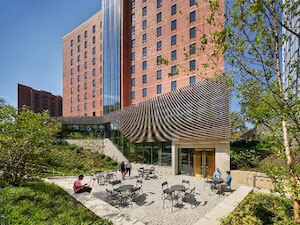
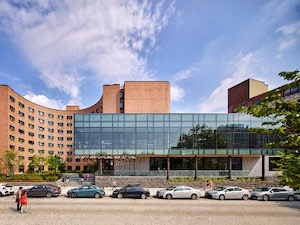
Drexel University Tour: Transforming the Residential Experience
Many post-war era dormitories are still in operation, but their deferred maintenance costs continue to grow and they fail to meet the needs and expectations of today’s students. What do we do with these “elephants” on campus. This tour will showcase Drexel University’s two recently-completed large residence hall revitalization projects, each encompassing a full renovation of a mid-century residence hall paired with small additions. We’ll visit both Bentley Hall and Kelly Hall to see how Drexel breathed new life into these buildings and positioned them as assets to the larger campus community.
Learning Outcomes:
- Recognize which housing buildings on your campus are better suited for demolition or renovation.
- Discuss the pros and cons of renovating existing campus housing or building new.
- Explain the benefits of including a small, yet strategic addition for program space during a student housing renovation.
- Compare and contrast the housing needs and expectations of yesterday’s students with the students of today.
AIA LU 1.5 Unit (SCUP59T010)
AICP CM 1.5 UnitCost: $65
9:00 am - 11:30 amOptional Tours | University of Pennsylvania Tour: Reviving a Mid-century Modern MasterpieceUniversity of Pennsylvania Tour: Reviving a Mid-century Modern Masterpiece
Select images of the building are available here.
The University of Pennsylvania’s (Penn) Alfred Newton Richards Medical Research Laboratory is a National Historic Landmark that includes five laboratory towers and a central service tower. Penn completed three phases of renovations to create state-of-the-art medical research space to support advanced teaching and learning. This tour will showcase the Richards restoration and renovation project and delve into its design and preservation standards, exterior glazing replacement, mechanical and electrical systems, and removal of wet labs for conversion into dry lab space.
Learning Outcomes:
- Describe the three renovation phases of the Richards restoration and renovation project.
- Recognize the building’s significance as a National Historic Landmark.
- Identify best practices in renovation that came out of archival research and materials analysis.
- Discuss the removal of wet labs and their replacement with other medical research uses that require less plumbing and fewer air changes.
AIA LU 2.0 Unit (SCUP59T011)
AICP CM 2.0 UnitCost: $65
Thursday, July 25, 20248:00 am - 5:00 pmOptional Workshop | SCUP Planning Institute: Sustain (Day 2 of 2)Build and Sustain an Integrated Planning Culture
The Sustain workshop is part of the SCUP Planning Institute Model.
Integrating planning doesn’t end with the plan itself. We want to help you build an institution that embodies planning. You’ll learn tools and practices that encourage stakeholders to collaborate, act strategically, and constantly look toward the future. SCUP provides expertise, direction, and the inspiration to nurture a culture of integrated planning on your campus.
The Planning Institute can help those who:
Already have an integrated planning process
Face persistent challenges or resistance that the planning process can’t address
Want their institution to be ready for an unclear futurePlanning Institute Workshop Details
The planning process can only do so much to drive change in your institution. What if your institution’s culture prevents change and growth?
In this workshop, you will learn how to leverage your institutional culture to leverage and manage change. As you know, any planning effort is designed to change the institution in a meaningful way, poised for success and nimble to adapt to a volatile environment. Here you will gain a deeper understanding of the dynamics of an integrated planning culture—the practices that encourage stakeholders to collaborate, act strategically, and look to the future.
You will return to your institution with tools, techniques, and skills you can use to help clarify decision-making at your institution so new ideas can move forward; use boundary-spanning practices to encourage silos to work together; manage difference and conflict, and; prepare for the future with scenario planning.
You have your plan; now it’s time to build a sustainable culture that is forward-looking, proactive, and poised for success.
Learning Outcomes
- Identify and adopt tools, methods, and actions that build an integrated planning culture.
- Anticipate challenges and opportunities in a dynamic and unpredictable world so your institution acts more than it reacts.
- Examine and improve power and decision-making structures within your institution.
- Help stakeholders set aside differences and work together across boundaries to achieve your institution’s goals.
No AIA or AICP credit is offered for the workshop.
Member Cost: $1425
Nonmember Cost: $1975Registration
Important!
Onsite registration will be available starting Sunday at 9:00 AM in the Pennsylvania Convention Center, on the 2nd level bridge behind the Grand Hall.Conference Options
Note: Full conference does not include optional workshops.
Full Conference Don’t forget to add a workshop or tour.Early-Bird
Pricing (ended 4/30)Regular
PricingMember $995 $1195 Nonmember $1495 $1695 Student
(Nonmember students must send a copy of their transcript to registration@scup.org.)$595 $595 Retired $595 $595 Monday Only Includes access to the Sunday night reception.Member $650 Nonmember $875 Tuesday Only Member $650 Nonmember $875 Workshop Only
Contact registration@scup.org to process your registration and receive the discount.Additional 10% Discount!
Register for 2 or 3 of the workshops and receive 10% off each workshop!Additional 20% Discount!
Register 3 or more from your institution and you’ll each receive 20% off your workshop registrations.SCUP Planning Institute: Foundations
Laying the Groundwork for Strategic Planning
One-day workshop – 7/19
Learn more about the programMember: $450;
Nonmember: $650SCUP Planning Institute: Design
Developing and Implementing a Strategic Plan
Two-day workshop – 7/20 and 7/21
Learn more about the programMember: $1425;
Nonmember: $1975SCUP Planning Institute: Sustain
Building and Sustaining an Integrated Planning Culture
Two-day workshop – 7/24 and 7/25
Learn more about the programMember: $1425;
Nonmember: $1975Tours Registration for the full conference or single-day is required to register for a tour(s). Single-day registration must match the day of the tour.[Sunday] Verdant Temple: Campus-wide Walking Tour of Temple University Sold out $65 [Sunday] Jaharis Hall and Roberts Music Building, Haverford College $65 [Sunday] Temple University: Breathing New Life into a Midcentury Library Building Sold out $65 [Monday] Amy Gutmann Hall – University of Pennsylvania Sold out $65 [Monday] College Hall – University of Pennsylvania Sold out $65 [Monday] Community College of Philadelphia Main Campus Tour $65 [Tuesday] Vagelos Lab for Energy Science and Technology – University of Pennsylvania Sold out $65 [Tuesday] Community College of Philadelphia Career and Advanced Technology Center (CATC) Tour $65 [Wednesday] Swarthmore College’s Values-Based Approach to Sustainability and Carbon Reduction Sold out $65 [Wednesday] Transforming the Residential Experience at Drexel University Sold out $65 [Wednesday] Reviving a Mid-Century Modern Masterpiece at UPenn Sold out $65 Spouse/Partner Reception Ticket Sunday
Welcome Reception 6:00 pm – 7:30 pm$50 Tuesday
Closing Reception 6:30 pm – 9:00 pm$50 If you would like to add an optional event to your registration, please email registration@scup.org.
Ways to Save on Your Registration
SCUP Group Membership Discount: If you work at a college or university that holds a SCUP group membership anyone from your institution can attend this event and any SCUP event at the member rate.Share SCUP 2024 with a colleague (new to SCUP?).
When you register for the full conference*, you can invite as many colleagues from your firm or institution to join you for a special discount ($875 full conference or $650 single-day). This offer is valid for anyone who hasn’t attended a SCUP event in the past (this includes the planning institute workshops, annual conferences, or regional conferences). Share this form with your colleagues to register.
*Your registration must be at the full conference rate – no discounts other than the early-bird pricing can apply. Note: This rate must be used at time of initial purchase.Deadlines Date Early-Bird Registration 4/30/2024 Cancellation 6/24/2024 Online Registration 7/17/2024 *Cancellations must be made in writing and may be submitted by email to your registration team registration@scup.org by 6/24/2024. Refunds are subject to a processing fee – 10% of the total purchase. No-shows are not eligible for a refund, and funds committed by purchase order must be paid in full by the first day of the event. Refunds will be issued within 30 days of received written notification.
Badge sharing, splitting, and reprints are strictly prohibited.
SCUP Photo Policy
Attendance at, or participation in, any workshop or conference organized by the Society for College and University Planning (SCUP) constitutes consent to the use and distribution by SCUP of the attendee’s image or voice for informational, publicity, promotional, and/or reporting purposes in print or electronic communications media. Video recording by participants and other attendees during any portion of the workshop or conference is not allowed without special prior written permission of SCUP. Photographs of copyrighted PowerPoint or other slides are for personal use only and are not to be reproduced or distributed. Photographs of any images that are labeled as confidential and/or proprietary is forbidden.
Scholarship
The Society for College and University Planning recognizes that professional development and travel budgets are being reduced or cut at many institutions. We believe that during tough times it is more important than ever to invest in education and to reach out to colleagues to help find solutions. We offer a limited number of SCUP Annual Conference Scholarships to help underwrite costs associated with participating in SCUP events.
Award
Complimentary Registration (up to 5 awarded)Application Deadline
Monday, April 15, 2024Notification of Selection
Scholarship applicants will be notified of award status by Friday, April 19, 2024.Hotel and Travel
Event Location
All program sessions will be held at the Pennsylvania Convention Center.Hotel Fraud Alert
We are aware that illegitimate companies are reaching out to our members and past attendees advertising hotel bookings through their companies. Please be assured that SCUP has never, and will never, share contact information with external parties. These companies claim to make a reservation for you, take your credit card information, and the customer typically does not have a reservation when they attempt to check-in. Please make your lodging arrangements directly with the SCUP hotels listed below.Hotel Information
Philadelphia Marriott Downtown
1201 Market Street, PhiladelphiaRate: $239 single/double occupancy*
Reservation Deadline
Monday, July 1, 2024*Room Rates
- Do not include applicable taxes and fees and subject to change without notice.
- Available three (3) days prior and post-conference dates.
- All reservation requests will require a credit card to guarantee the reservation. The credit card is only charged one-night lodging plus tax if the reservation is cancelled less than 72 hours prior to arrival, or there is a no-show.
- Name changes to room reservations may be made prior to arrival at no charge.
- Early Departure Fee: In the event a guest checks out prior to the guest’s reserved checkout date, the hotel will add an early checkout fee to that guest’s individual account, currently one-nights room rate & applicable tax. Guests wishing to avoid an early checkout fee should advise the hotel at or before check-in of any change in planned length of stay.
Travel Information
Airport
Philadelphia International Airport (PHL)
Southeastern Pennsylvania Transportation Authority (SEPTA)
-SEPTA provides train service between Center City and the airport on the Airport Regional Rail Line. Trains run every 30 minutes on weekdays and operate from 4:13 am to 11:03 pm (Center City to Airport) and from 5:07 am to 12:07 am (Airport to Center City).On weekends, trains run hourly and operate from 5:13 am to 11:13 pm (Center City to Airport) and from 6:07 am to 12:07 am (Airport to Center City)
Approximate Trip time: 45 minutes
Approximate Fare: $13Traveling to the PA Convention Center
- Driving directions
- Parking
- Public Transit
Ride App Services
-If you plan to use Uber, Lyft, or another app-based ride service after landing at PHL, proceed through Baggage Claim and follow the Ground Transportation signs for Ride App/Zone 7.Approximate distance: 12.5 miles
Call for Proposals
Deadline was Tuesday, December 5, 2023, 11:59 PM Eastern
Share your knowledge.
Help your peers.
Bring planning together.Present at SCUP 2024!
✔ How have you used integrated planning practices to create positive change?
✔ What actionable integrated planning advice and guidance do you have for your peers?We want your proposal for a session at our in-person 2024 conference in Philadelphia, PA!
What is Integrated Planning?
Integrated planning is a sustainable approach to planning that builds relationships, aligns the organization, and emphasizes preparedness for change.
How can you tell if you’re doing integrated planning?
Some of the hallmarks of integrated planning:
- Cross-functional collaboration: Are people from different departments or functions discussing, deciding, and acting together?
- Alignment up, down, and/or sideways: How do institutional priorities and day-to-day actions influence each other? How do decisions in one area of the college or university connect to decisions in another area?
- Planning linked to resource allocation and assessment/metrics: Does the plan inform resource decisions? Do performance data inform plan decisions?
- Collaborative governance: Do key stakeholders have a voice in decision-making?
- Future-focused, balancing aspiration with pragmatism: Do you work towards a vision? Are your decisions informed by the realities of the external environment?
If you have actionable advice about how your peers can do the above, we want to share it!
Who Should Submit?
Anyone who practices integrated planning. Integrated planning engages all sectors of the academy:
- strategic planning
- academic affairs
- institutional effectiveness
- student affairs
- business and finance
- campus planning
- information technology
- communications, and
- development.
It involves stakeholders from across the campus:
- faculty
- administrator
- students
- staff
- alumni, and
- external partners.
Bringing Together Different Perspectives and Experiences
By design, integrated planning is an inclusive practice that brings together perspectives and experiences from across an institution’s community to create solutions. This can only be accomplished when all voices are heard, recognized, and valued.
As you put together your presentation team, consider these questions:
- Whose perspective is missing?
- Whose voice is not being heard?
We strongly encourage you to make sure your presentation team includes different voices, and that these voices are given meaningful time to share their perspectives.
What Makes a Great Conference Proposal?
Great proposals focus on one of two things: solutions or foresight.
Solutions: help attendees solve a pressing problem.
Foresight: explore innovative new ideas, analyze trends, and prepare attendees for the future.
All great proposals have the following:
Takeaways: give attendees next actions, tips, tools, processes, etc., that can be applied immediately.
Engagement: engage attendees with your content and with each other in meaningful ways.
Topic Ideas
We seek exceptional, well-developed proposals on topics related to integrated planning in higher education.
Proposals on the following integrated planning topics are especially welcome:
Planning Processes and How Tos
- Integrated planning techniques and best practices
- Implementation processes that work
- Integrating your planning processes
- Aligning planning, budgeting, and assessment
- Effective strategic planning
- Departmental planning
Change Leadership and Change Management
- Dealing with bottlenecks and bureaucracy
- Leading culture or organizational change…quickly
- Building buy-in
- Engaging faculty in the planning process
- Preparing your college or university for an uncertain future
Ongoing Challenges
- Staff retention and recruitment
- Space management—especially for hybrid learning and working
- Fostering equity and belonging
- Planning through leadership turnover
- Mitigating resource cuts
Academic Planning
- Academic program planning
- Academic program review
- Linking the academic plan with strategic enrollment management
- New paradigms for teaching and learning
- Approaches to instructional design
Campus Planning
- Dealing with maintenance backlogs
- Rightsizing the campus
- Flexible environments
- Space use changes
Session Type
Note: For SCUP 2024, we are NOT accepting proposals for pre-conference workshops.
Concurrent Sessions
Concurrent Session Quick Facts
- Sessions will be offered on Monday and Tuesday (July 22–23, 2024).
- Only 60-minute sessions are available – 90-minute sessions will NOT be available.
- Submissions must be made using SCUP’s online submission tool.
- Read other frequently asked questions.
Concurrent Session Proposal Questions
The proposal form doesn’t ask for an abstract, title, etc. Rather, it asks you specific questions about the content you are going to present. This gives session reviewers a clear understanding of what you plan to cover during your session.
Examples of active learning exercises you can include in your proposal.
View the questions included on Call for Proposals Form
Not sure how to answer these questions? Check out an example.
Other Questions You Will Need to Answer
- Session Presenter(s): Identify your session’s presenter(s), 4-presenter limit
- Presenter Biography, 150-word limit
- Room Set
- What type of room set would you prefer to best enhance participant learning in your session? We try to provide preferred room set requests, but cannot guarantee them
- Audio Visual Questions
- Will you show a video?
- Will you play a sound clip?
- Will you go online? If so, what will you do online?
After You Submit Your Proposal
How Proposals Are Reviewed
-
- Concurrent session proposals are reviewed by your peers, active SCUP members who have attended past annual conferences. Reviews are based on attendee takeaways, topical relevance, and session organization.
Requirements If You Are Accepted
- Presenter Registration Requirement
All concurrent session presenters are required to register for the conference; presenters DO NOT receive free or discounted registration(s). - Use of Presentation Materials
Session materials are required to be uploaded in advance of your presentation. During the conference, slideshows and handouts from each accepted concurrent session are made available to attendees through the conference mobile app. Following the conference, these presentation materials will be posted on the SCUP website for attendees to view and download. By participating as a concurrent session presenter, you agree to allow SCUP to share your content in this way.
QUESTIONS? Email speaker.information@scup.org.
The call for proposals closed Tuesday, December 5, 2023, at 11:59 PM EST.
- Topics
- Topics



